Bali had always been a huge bucket list item for me, so I was thrilled when we decided spend a full week there for our 2nd wedding anniversary. After A LOT of research we decide on a half exploration, half relaxation trip. So, for the first half of our trip we spent it exploring temples, hanging out with monkeys and eating everything we possibly could. The second half was spent lounging on a beach, swimming and once again eating everything we possibly could.
Honestly we did so much, I couldn’t possibly fit it into one blog post. So, here is part 1 of 3 for my Ultimate Bali Guide series. Here I’m going to focus on all the amazing places we visited along with updated pricing and some helpful tips we learned along the way. Let’s dive in!
WANAGIRI HIDDEN HILLS
The Bali Swing in Ubud is perhaps one of the most iconic Instagram spots in Bali. Of course with an increase of fame, also comes an increase in entrance fees and crowds. Fortunately, its popularity led others to create similar (cheaper) spots throughout Bali. Enter Wanagiri Hidden Hills. When I was researching this place, the information and prices were all over the place. When we arrived, they offered 4 different packages. We chose to go with the cheapest one which gave us access to 8 different photo spots for 100,000 IDR per person. Some of the more expensive ones include a swing you can actually swing on, but we decided to keep it simple.


While these tourist trap type places aren’t really our thing, I was completely drawn in by the natural scenic backdrop of the Twin Lakes (Lake Tamblingan & Buyan Lake) along with Mount Lesung and Batukaru. It really is an amazing place to take romantic and whimsical photos and the staff there is more than happy to help out with reflectors, posing and shooting.

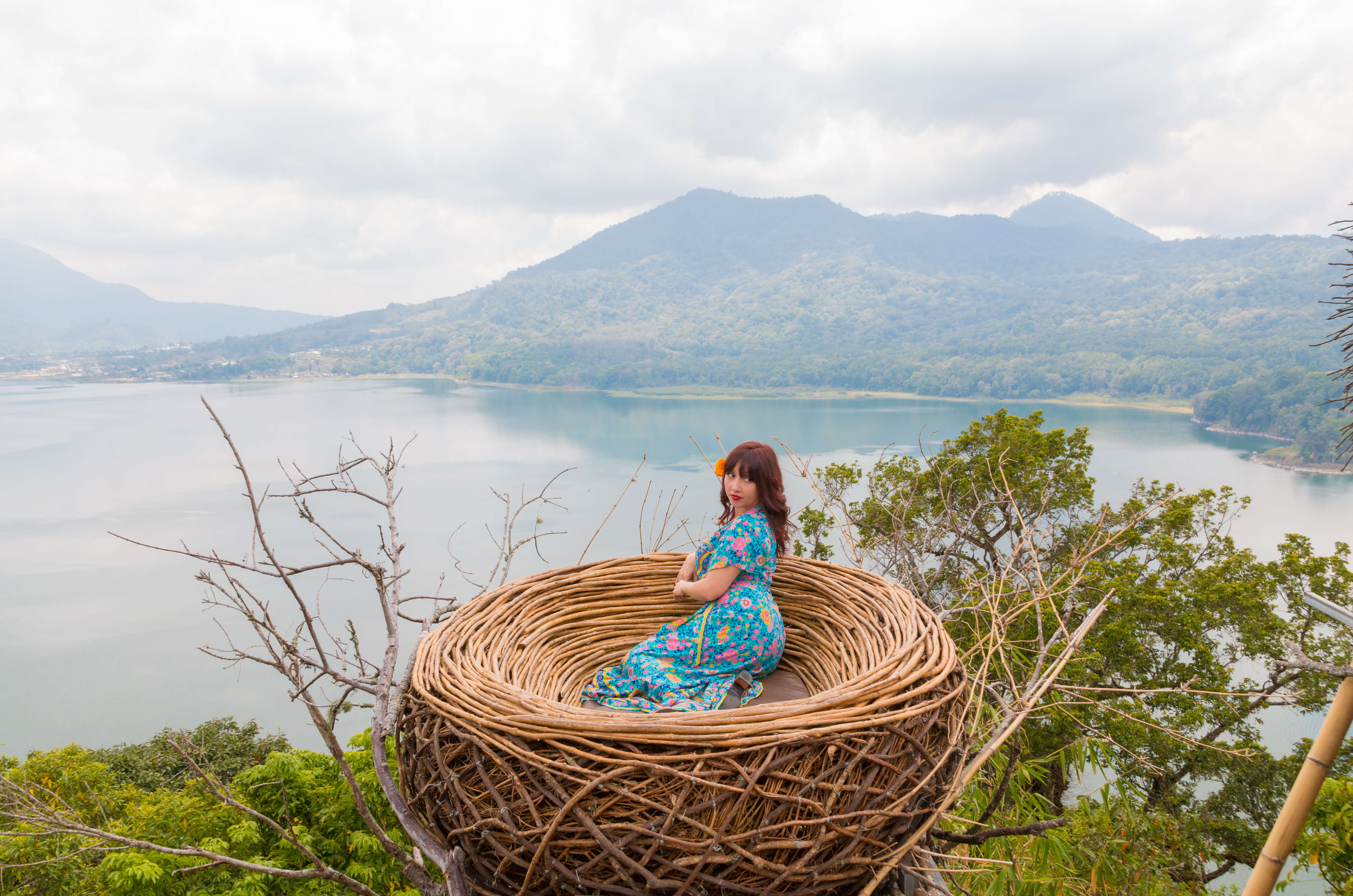
We went around 10am which apparently was the ideal time to go to avoid heavy morning fog and large crowds. We spent about an hour moving leisurely from installation to installation and even did some retakes. Though it didn’t start to pack up until we were on our way out, everyone was really patient and waited their turn. It was a pretty chaos free experience and we came out of it with some gorgeous photos.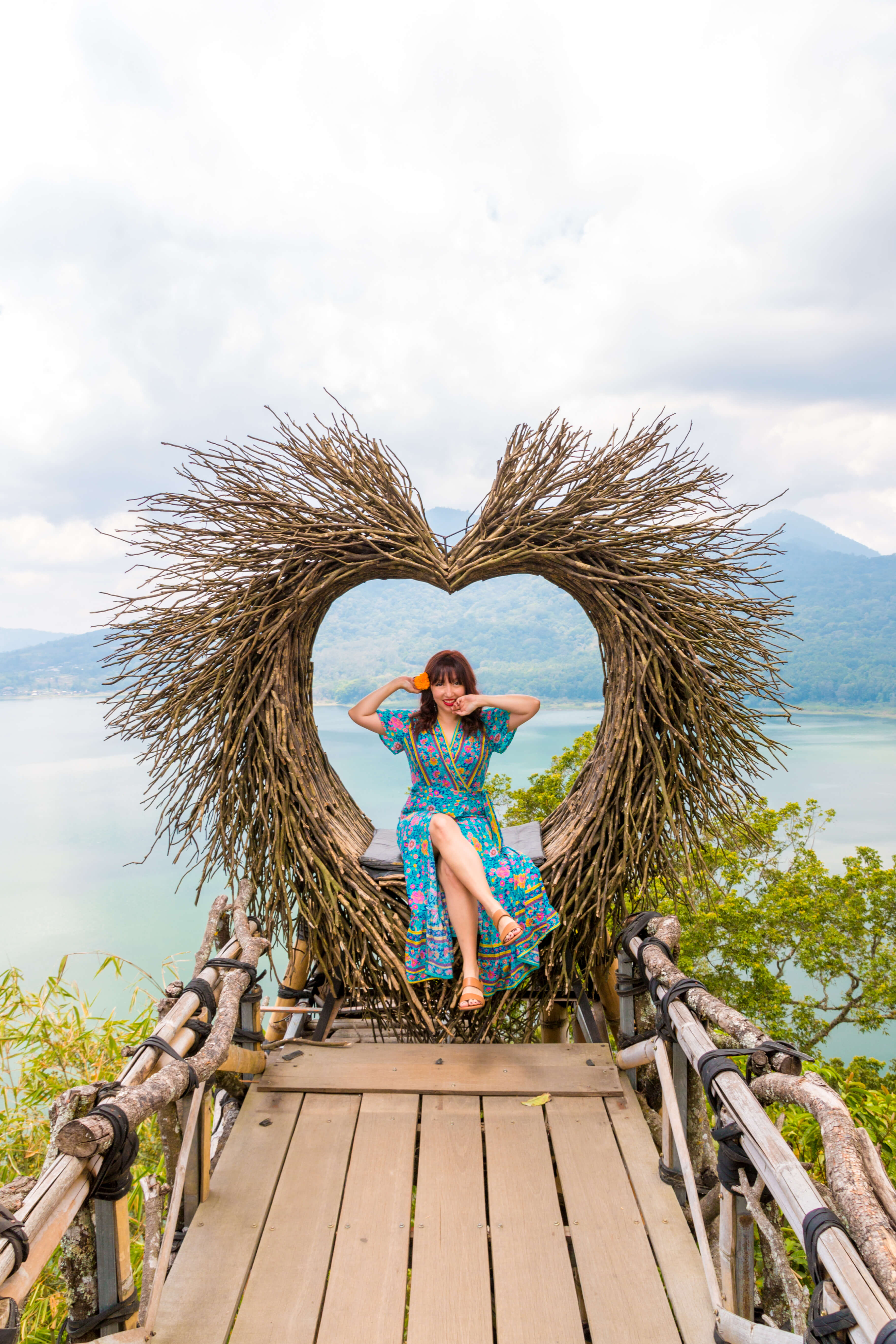

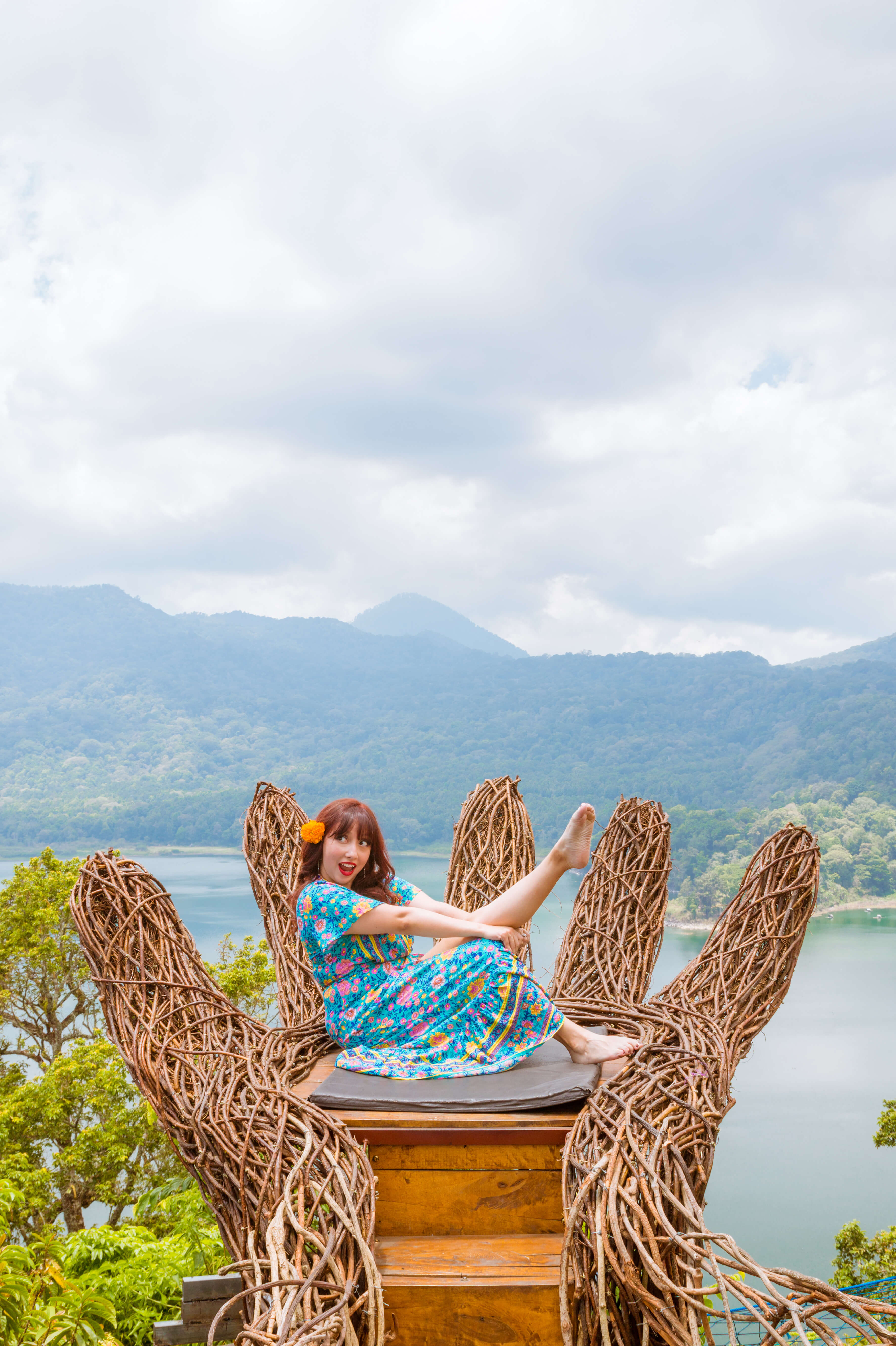
SIDE NOTE: While I chose to wear my outfit to the location, they also provide changing rooms on site if you’d rather change there. You can even opt to rent a dress or accessories from them for a couple of extra rupiah.
HANDARA GATE
Not too far from Wanagiri Hidden Hills lies the Handara Gate, which is another incredibly famous instagram spot. The iconic gate is actually just the entrance for a golf resort, but since its rise to fame, they have begun charging a photo fee there. When we drove by, there were at lease 4 tour buses parked along the side of the rode and a crazy long line for pictures. Having just come from Wanagiri, we decided to take a pass. We knew there would be other spots in Bali that would be far more picturesque and probably free (and there were).
ULUN DANU TEMPLE
Locally known as Pura Ulun Danu Beratan, the Ulun Danu Temple is another great find in the area. The temple has been around since 1633 and consists of four sacred buildings devoted to the Hindu gods Brahma, Vishnu, and Shiva. It’s also known as the Floating Temple because when the tide comes in, the temples appear to be isolated and floating on top of the lake. Unfortunately, if you come at low tide (like we did) you will definitely miss out on this amazing view. 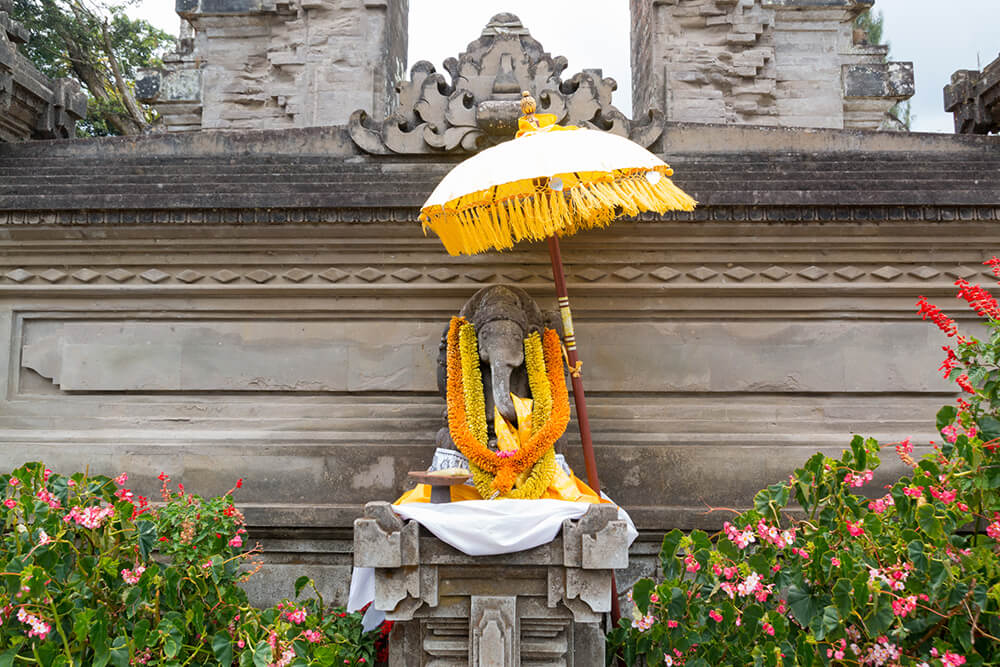

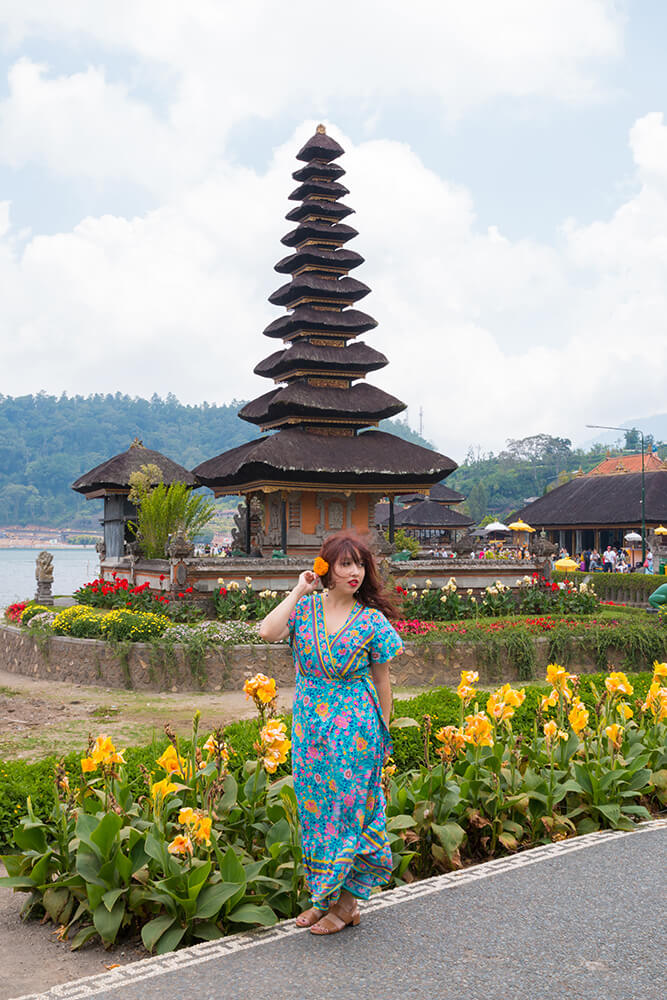
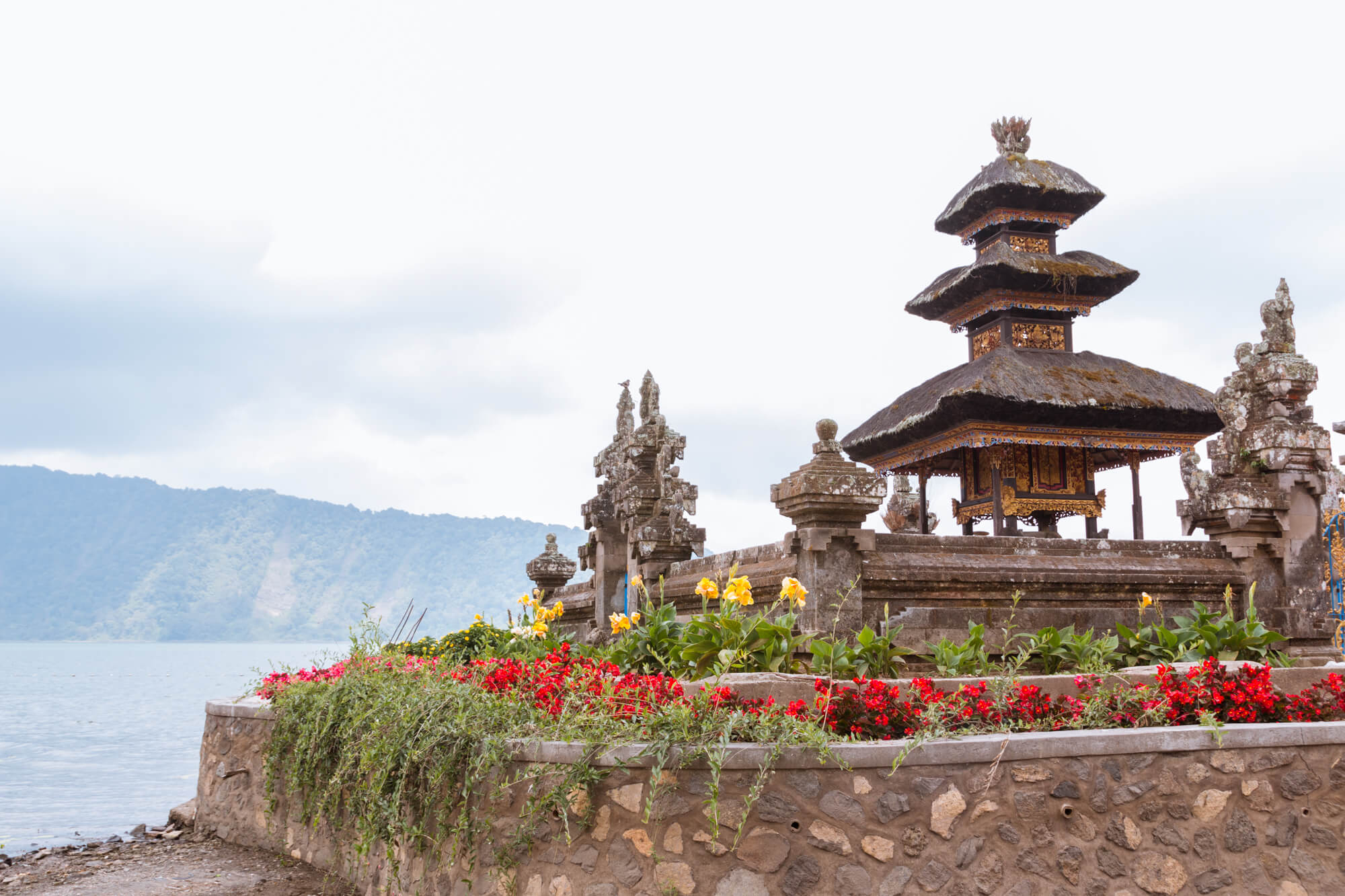
However, the trip over was not a total loss. Even at low tide there were plenty of statues, carvings and small temples and to catch our eyes. We even came across a water deer aka “vampire deer” enclosure. While many areas were closed off to tourists, we did enjoy the glimpses of rituals and prayers we caught through cracks in gates and over low walls. One thing we did not enjoy too much were the random (sometimes tacky) photo spots that were obviously set up around the temple for tourists and selfies. Personally, I felt it took away from the historical beauty of the temple.

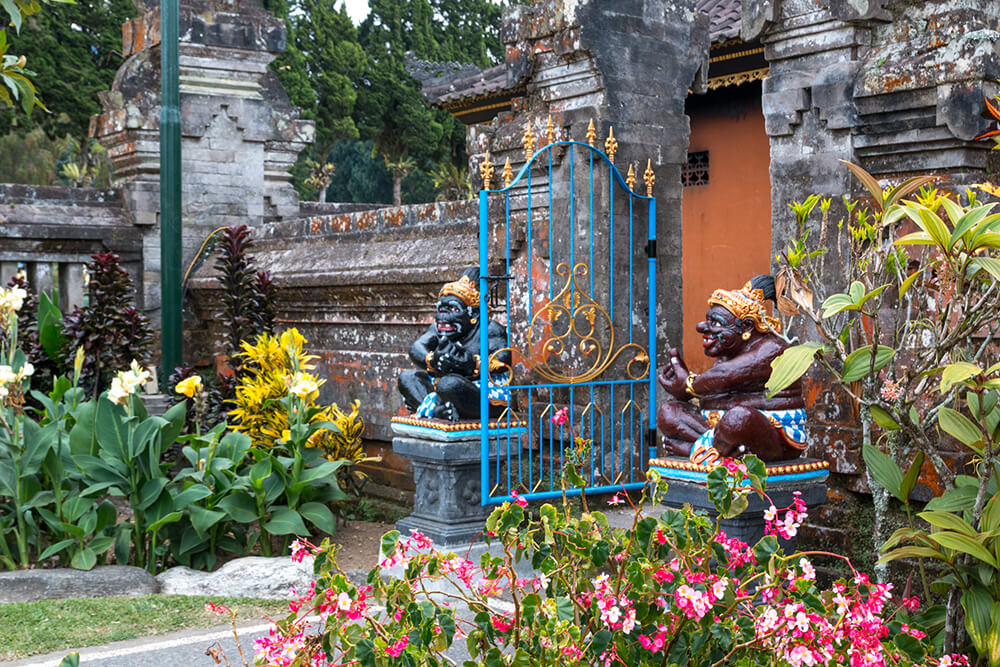

If you’re in the area, it’s definitely worth a visit. The tickets are 50,000 IDR per person and the grounds are pretty spacious, so we didn’t really run into much overcrowding. There’s plenty to see and admire, but there is nothing written in English, so a tour guide would definitely come in handy if you want to learn about the temple. I also recommend checking the tide and weather report in advance, so you can avoid any heavy fog and see the temple when it is “floating.”
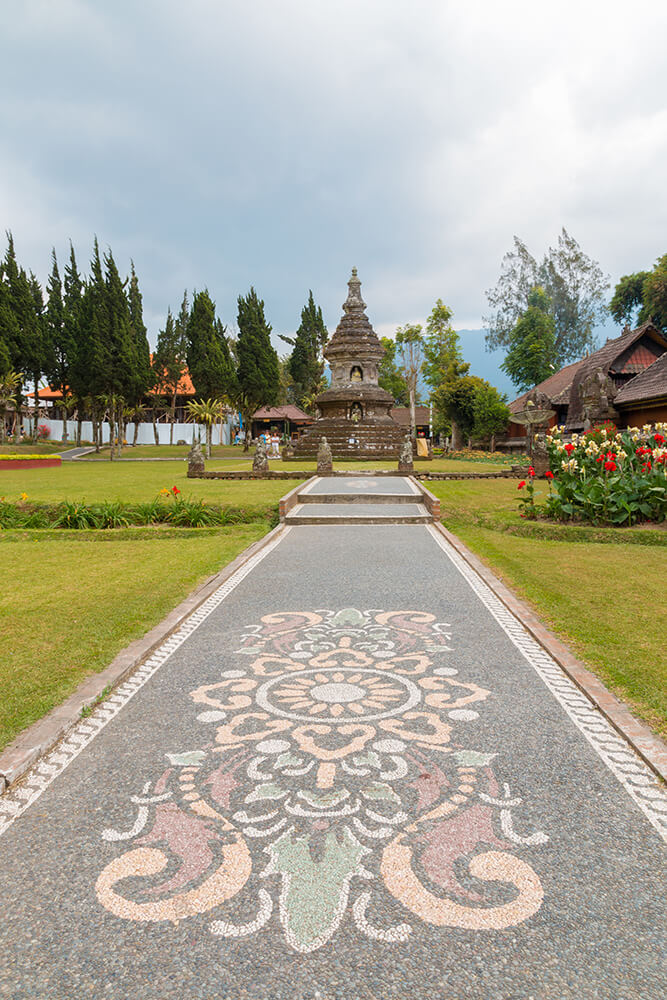


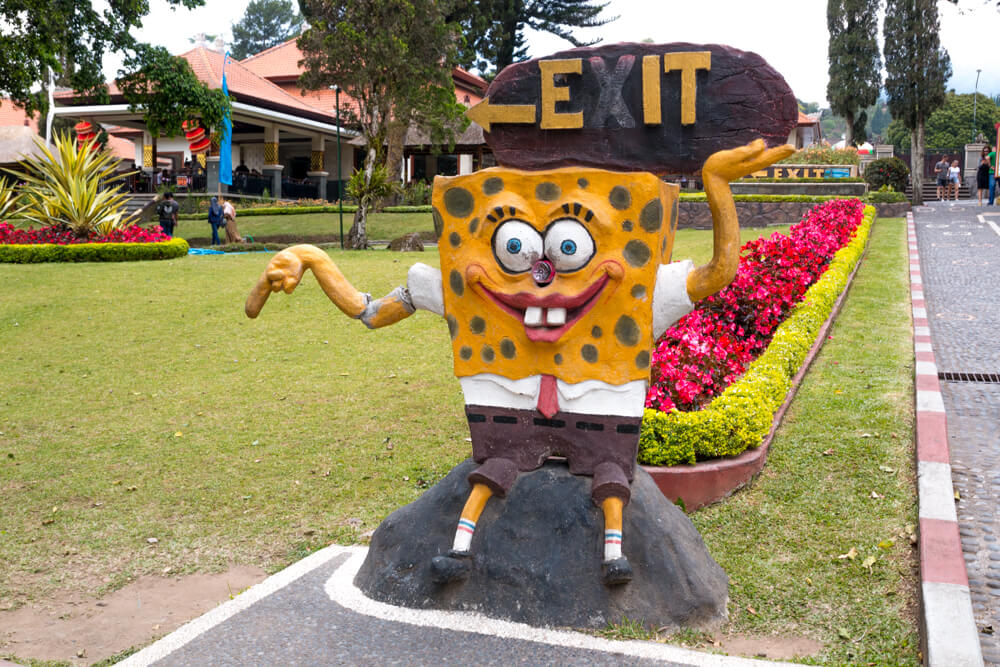
SACRED MONKEY FOREST SANCTUARY
I love animals, so of course I jumped at the chance to visit a genuine monkey sanctuary. Located in Ubud, the complex holds three 14th century temples and is home to over 1059 monkeys. When we arrived, it was feeding time and there was food all over the floor and the monkeys were in a feeding frenzy. The monkeys were obviously very comfortable around people and basically walked, sat and slept wherever they wanted. It was up to us to make sure we didn’t accidentally cheese one off or step on a tail. Monkey tails were everywhere!

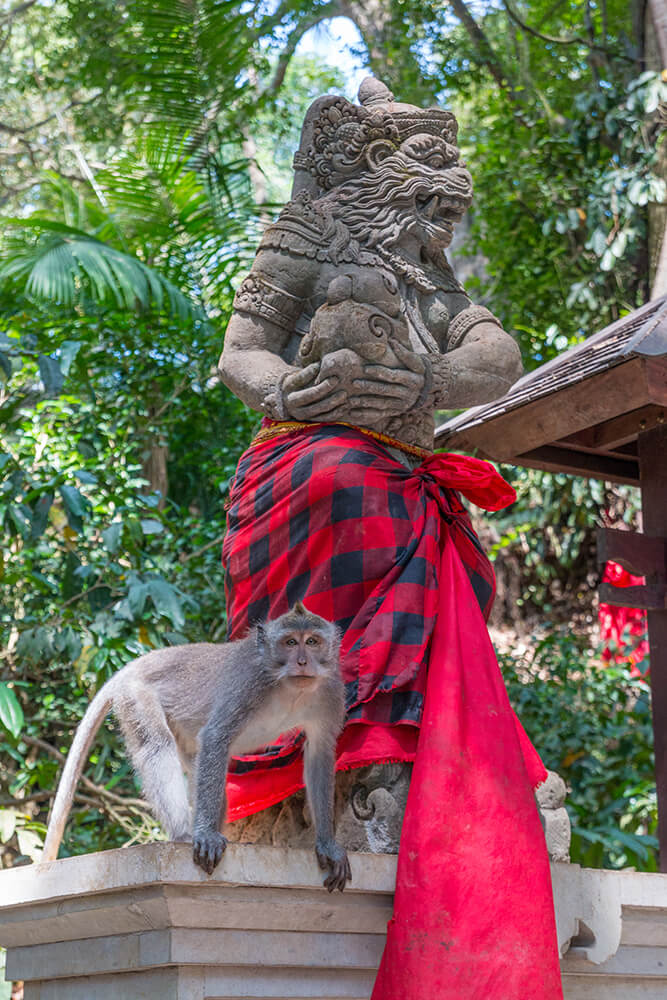
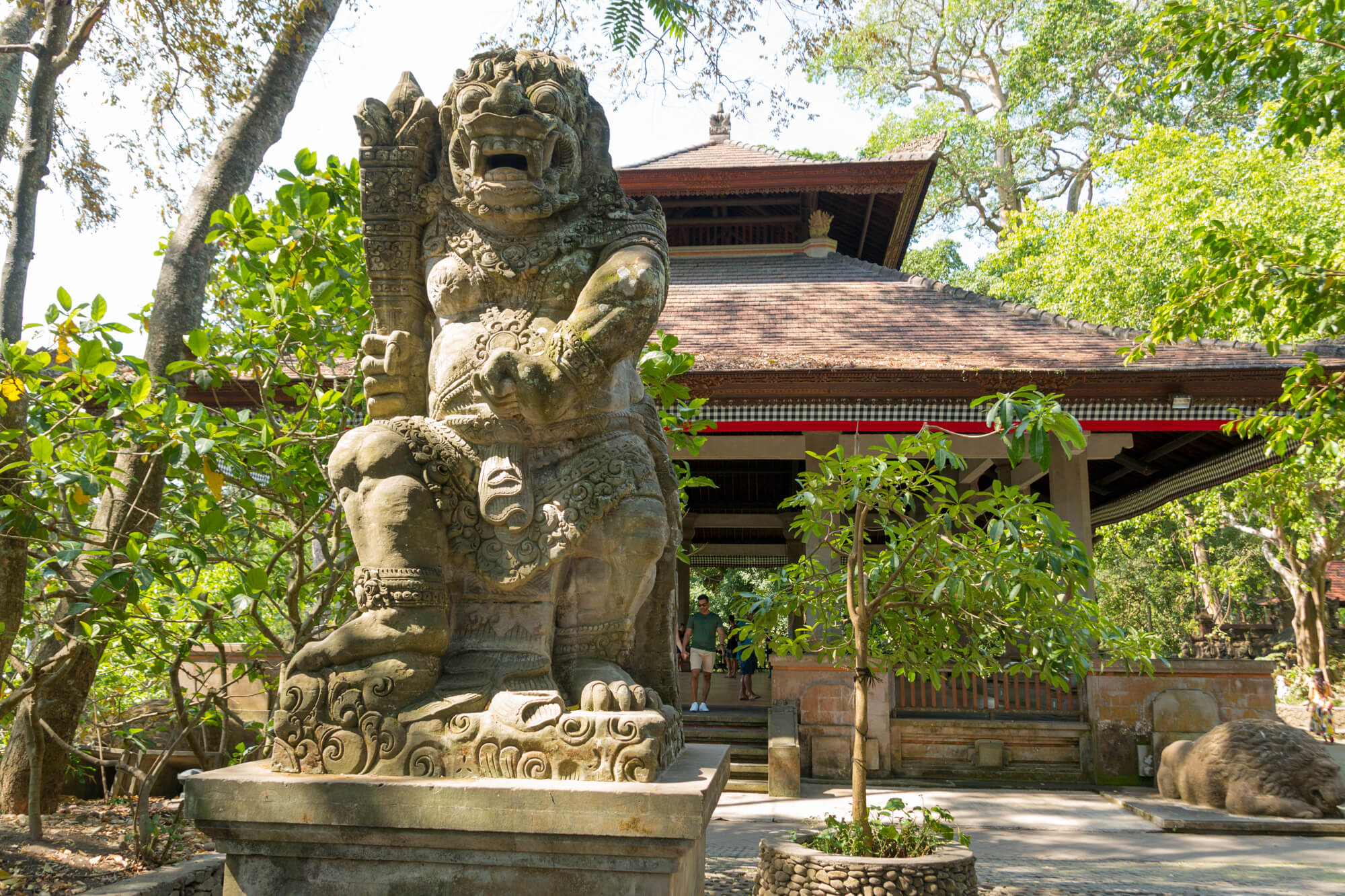
When you enter, there is a whole list of things NOT TO DO. Having heard horror stories of people being mobbed or bitten, we were determined to follow all the rules. Unfortunately all the rules in the world don’t mean a thing when it comes to the natural curiosity of a monkey. On our way out, I was mobbed by 3 monkeys who were very interested in eating my pants. I’m still not quite sure what peaked their interest, but I suppose when it comes to monkeys, expect the unexpected.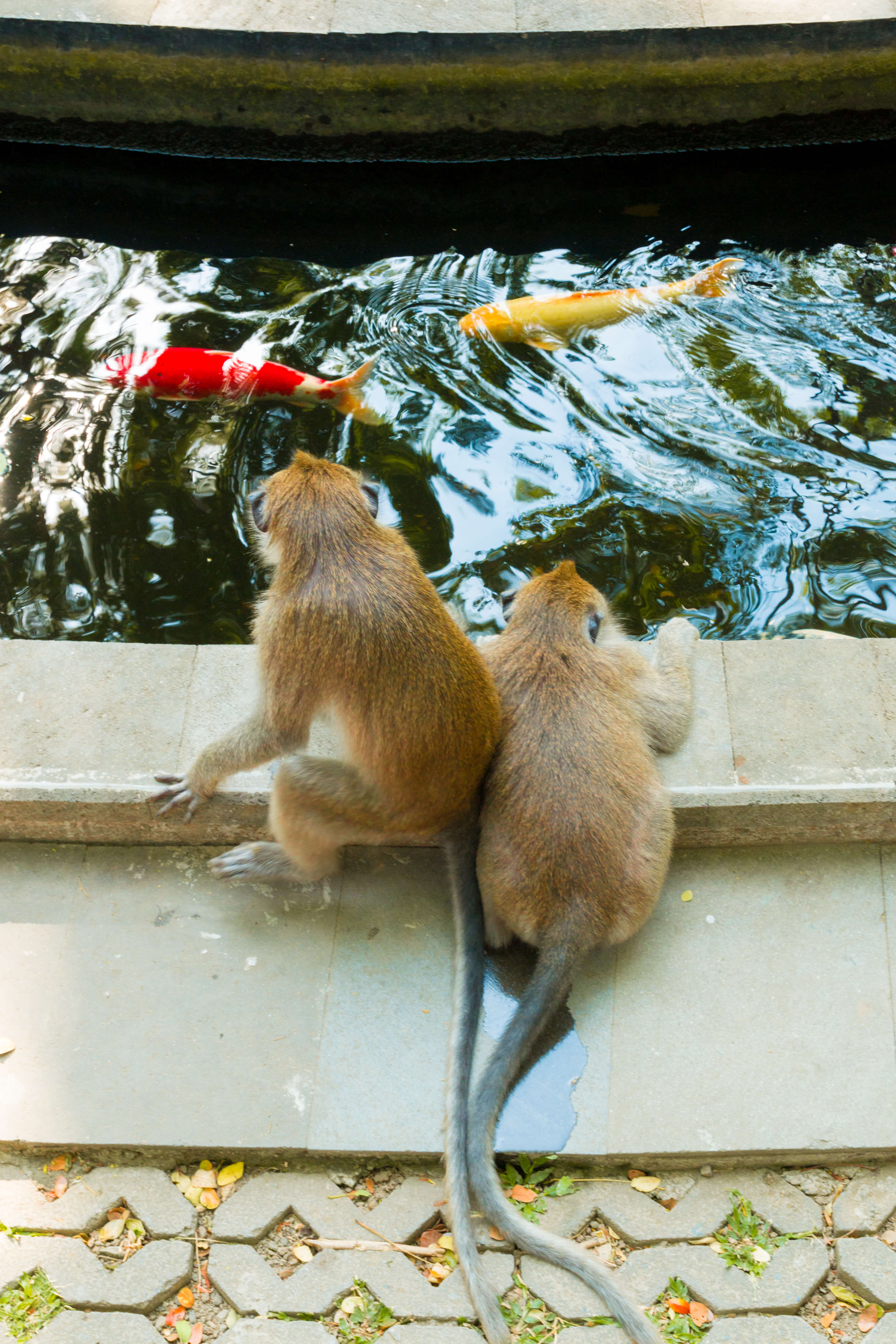

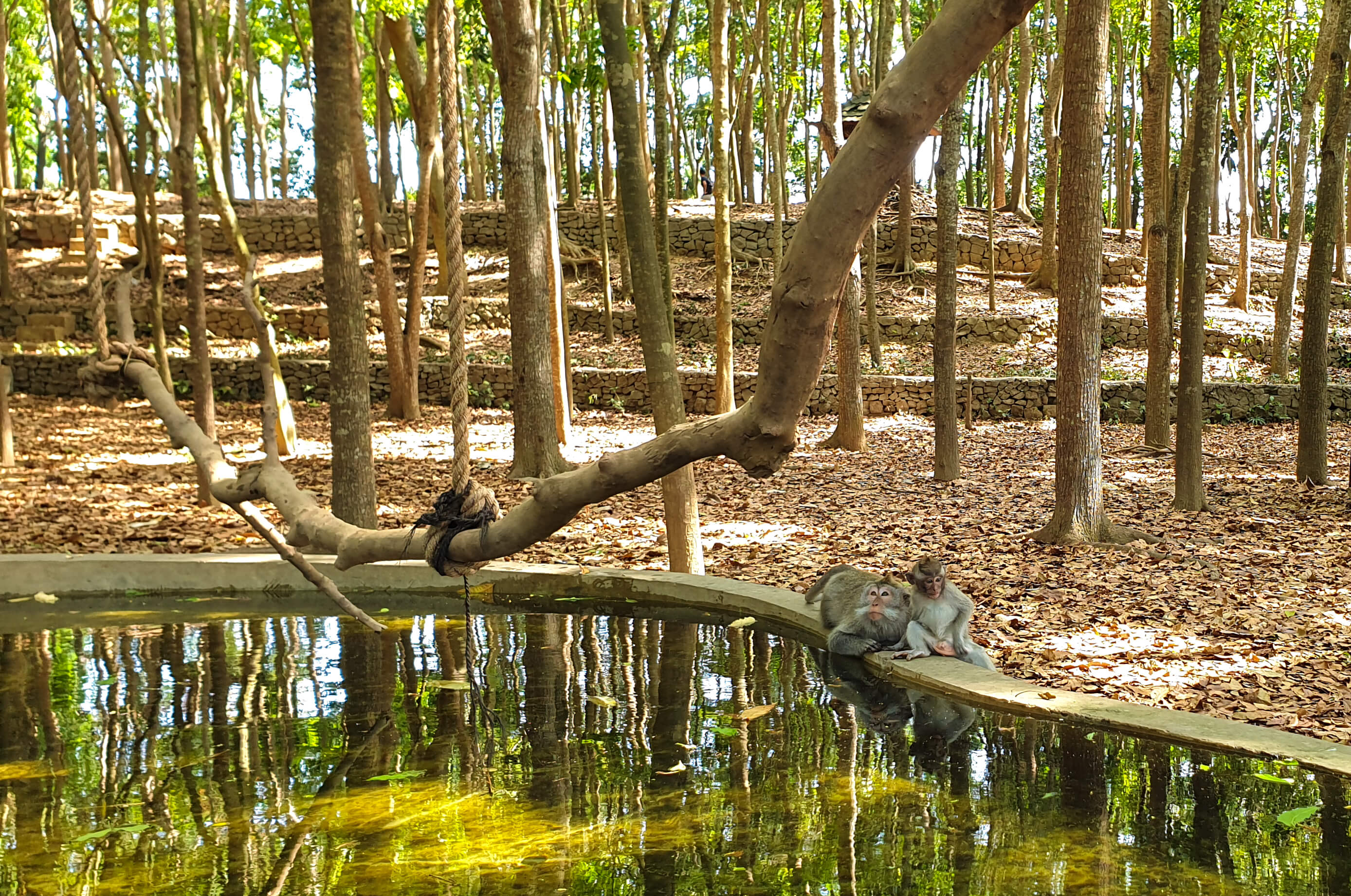

The actual forest is absolutely gorgeous and provided us with much needed shade on a hot afternoon. Statues, pagodas and ancient carvings are littered throughout the sanctuary, it was hard to put my camera down. Out of all the things to see there, I’d have to say the Holy Water Temple was by far my favorite. Across a stone serpent bridge, shrouded in green vines lies the ancient Holy Water temple… and possibly the Holy Grail. In all seriousness though, this area of the forest gives off some major Indiana Jones vibes. We were really enjoying ourselves until a huge black and yellow snake slithered across the branches of a tree above our heads. After the monkey incident, we didn’t want to test our luck and felt it was time to go.

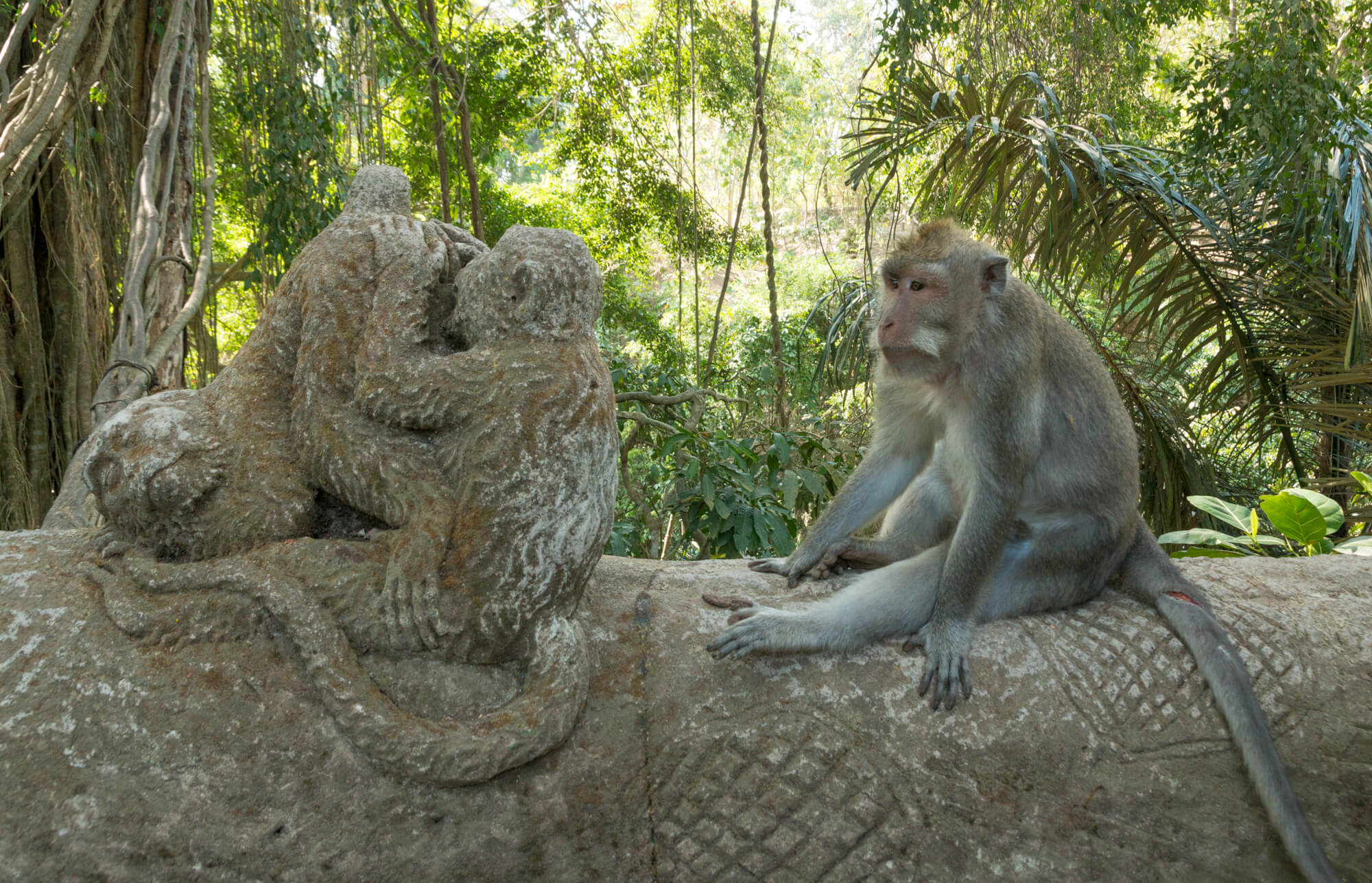

Overall, It was an amazing experience. The monkeys seem to be treated and fed very well and for the most part are just left to do all the things that monkeys do. Aside from distributing food, the staff also works very hard to keep the area nice and clean. Tickets will set you back 80,000 IDR per person and it’s totally worth it.

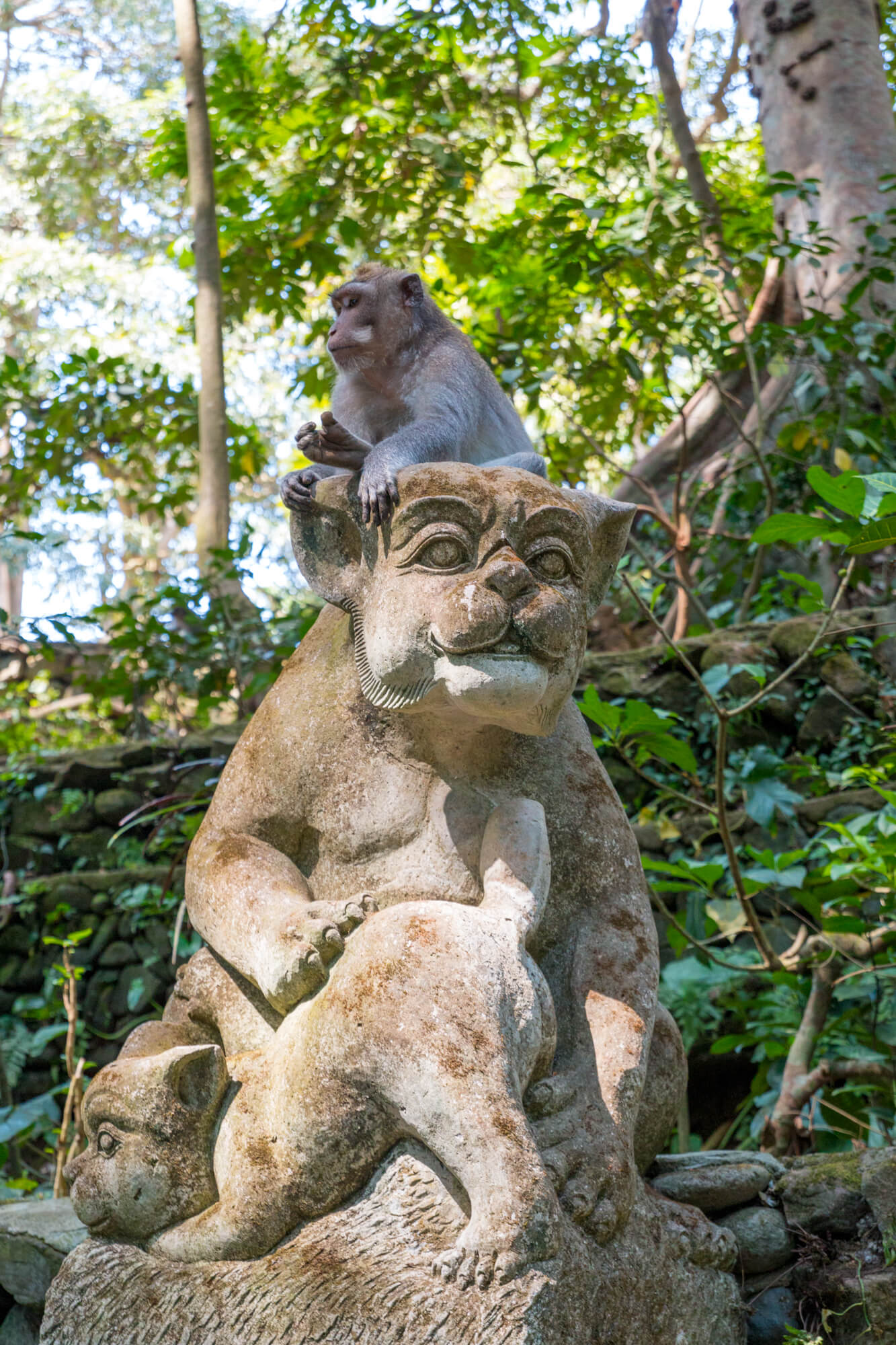
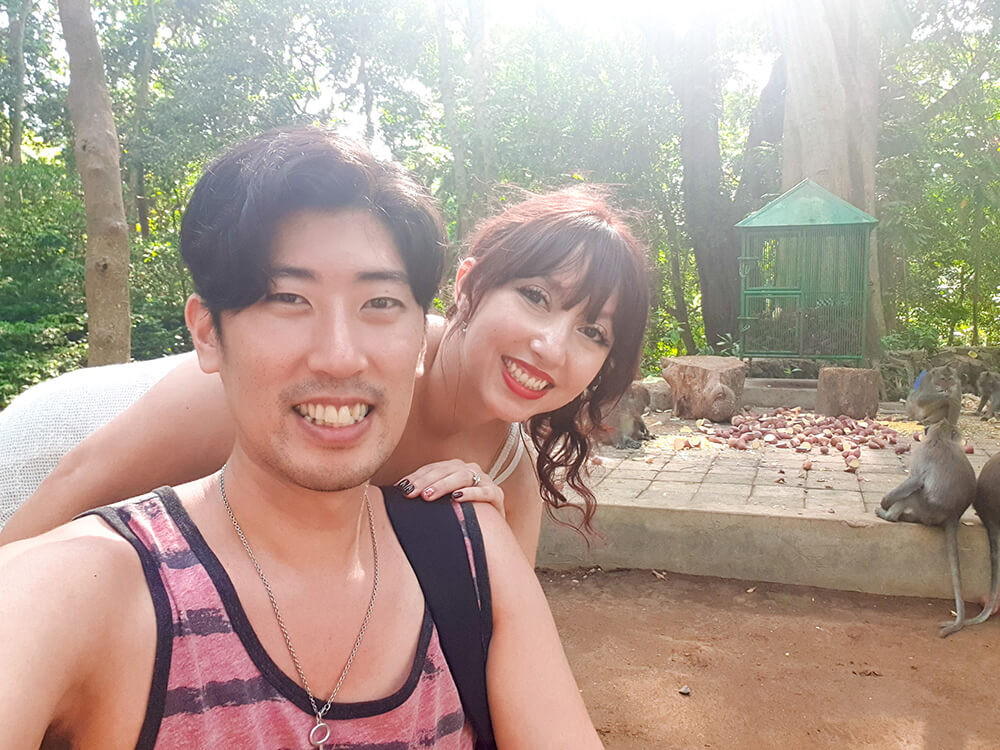
Tip: There’s a lot of walking involved, and lots of icky sticky things on the floor so I highly recommend some comfortable closed-toe shoes.
UBUD ART MARKET
I’ve been to more than a few places where I’ve had to haggle, but the Ubud Art Market is on a whole other level. There are tons of stalls selling an array of sarongs, dresses, hand carved trinkets and basket bags. In fact, there are so many places selling the same type of goods, shopping around is an absolute must.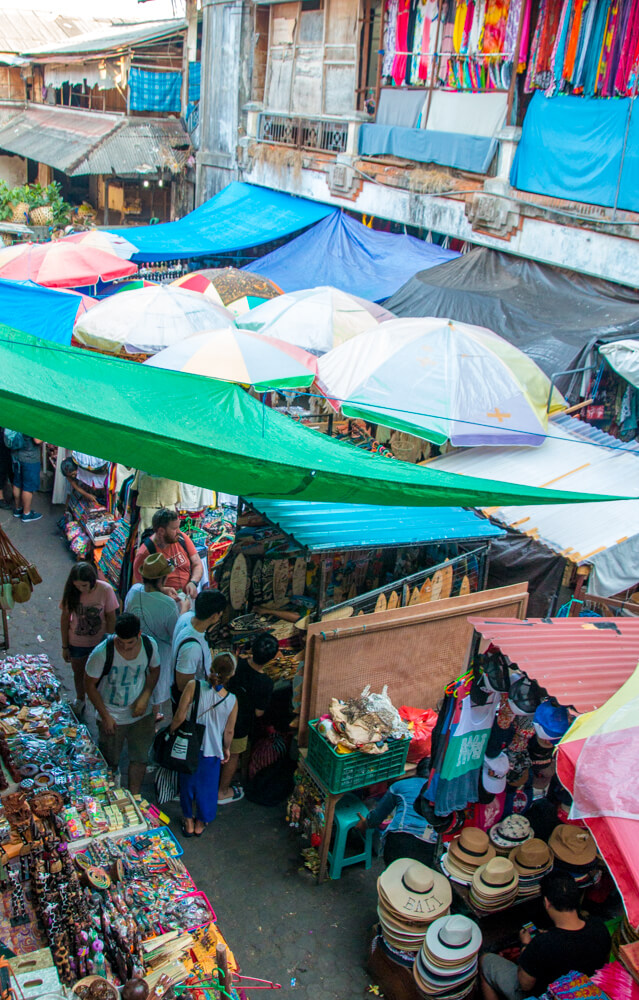


Now what to buy? Personally, I’m not a fan of clutter. I won’t buy something if it’s just going to end up in a box or the back of a closet… no matter how cheap the price is. That being said, I sill found some great items to take home.
- Sarongs: This market is sarong central which I highly recommend purchasing if you plan on visiting temples. I was totally overwhelmed by all the different patterns and colors, but eventually I found something I really liked and haggled down to a price I felt was reasonable. Haggling here requires you to literally walk away from a vendor and have them call you back. In this particular case, I walked away about 10 times before we came to an agreement of 2 sarongs for 90,000 IDR as opposed to 1 sarong for 200,000 IDR. I found that the sarongs vary in price according to thickness, intricacy and general quality, something to keep in mind when haggling.
- Hand Carved Statues: To keep clutter to a minimum, my husband and I pick out one small hand carved statue from each trip we take. A marble elephant from India, polished wooden lion from China, wood elephant from Thailand and this time a wooden Barong from Indonesia. A Barong – a lion-like creature from Balinese mythology. He is the king of the spirits and I became totally obsessed during our trip. Unfortunately, the design is so detailed that I had to buy a medium sized one. It’s the biggest souvenir I own, but I love it! No regrets.
- Jewelry: Bali is know for its silver and goldsmiths. In fact, Celuk Village has been synonymous with silver and goldsmiths for centuries. Since I didn’t have time to visit the village this time around, I decided to poke around the market to see what I could find. I ended up coming across a little boutique not too far from the market area that specializes in gamelan balls. Gamelan balls are little sterling silver charms that are hand crafted by local silversmiths so no two are exactly alike. The inside of each ball contains little brass chimes that sound like gamelan, a Balinese traditional musical instrument. We heard these instruments throughout our entire trip, so this charm seemed like a perfect way to take a bit of Bali home.
We went to the market three times! Once in the morning, once in the afternoon and once at night when shops were starting to close up. So believe me when I say the best time to go is in the morning. It is way less crowded and the vendors are far more willing to haggle since the first sale of the day is considered to be lucky. You can also ask for “harga pagi,” which is the “morning price.” The afternoon, on the other hand, is wildly crowded with tourists and aggressive vendors yelling at you in a multitude of languages trying to sell you their goods. We often got Japanese, but there were more than a few who pegged us for Korean. It was so noisy, but honestly I was just so impressed with how many different languages the vendors could speak, even if it was just a few phrases. Finally, night time is a good time to shop if you know exactly what you want to buy. Shop owners are more than happy to get a couple more sales in before closing, so haggling is a bit easier. This is when I bought my Barong.
If you plan to buy any souvenirs on your Bali trip, this is the place to do it. In total we took about 2 hours exploring every nook and cranny and weaving through every alley we could find. Even if you don’t buy anything, It’s definitely worth walking through if only to admire all the beautiful hand crafted items.
CAUTION: Not all the alleys are through streets, some will lead you straight INTO someone’s house. We discovered this when my hubby went down an alley and was met with an “excuse me, this is my home.” He was terribly embarrassed, but it was hilarious. So, explore with caution.
UBUD PALACE
Ubud Palace or Puri Saren Agung Ubud as it is locally called, was built during the lordship of Tjokorda Putu Kandel from 1800 to 1823. Unlike palaces here in Korea, only the front section of this palace is open to the public. This is actually a pattern we found to be true throughout our trip. Large portions of historical sites and temples tend to be closed off to the public. It’s a bit disappointing for people like my husband and I who like to leave no stone unturned, but what can you do?


The spaces that were open for public viewing were of course amazing. Intricate statues, beautiful traditional Balinese architecture. You will find that many of my photos feature me in front of a door or archway and thats because Balinese architects know how to make a mean entrance. The level of detail, color and creativity is enough to turn anyones head. 

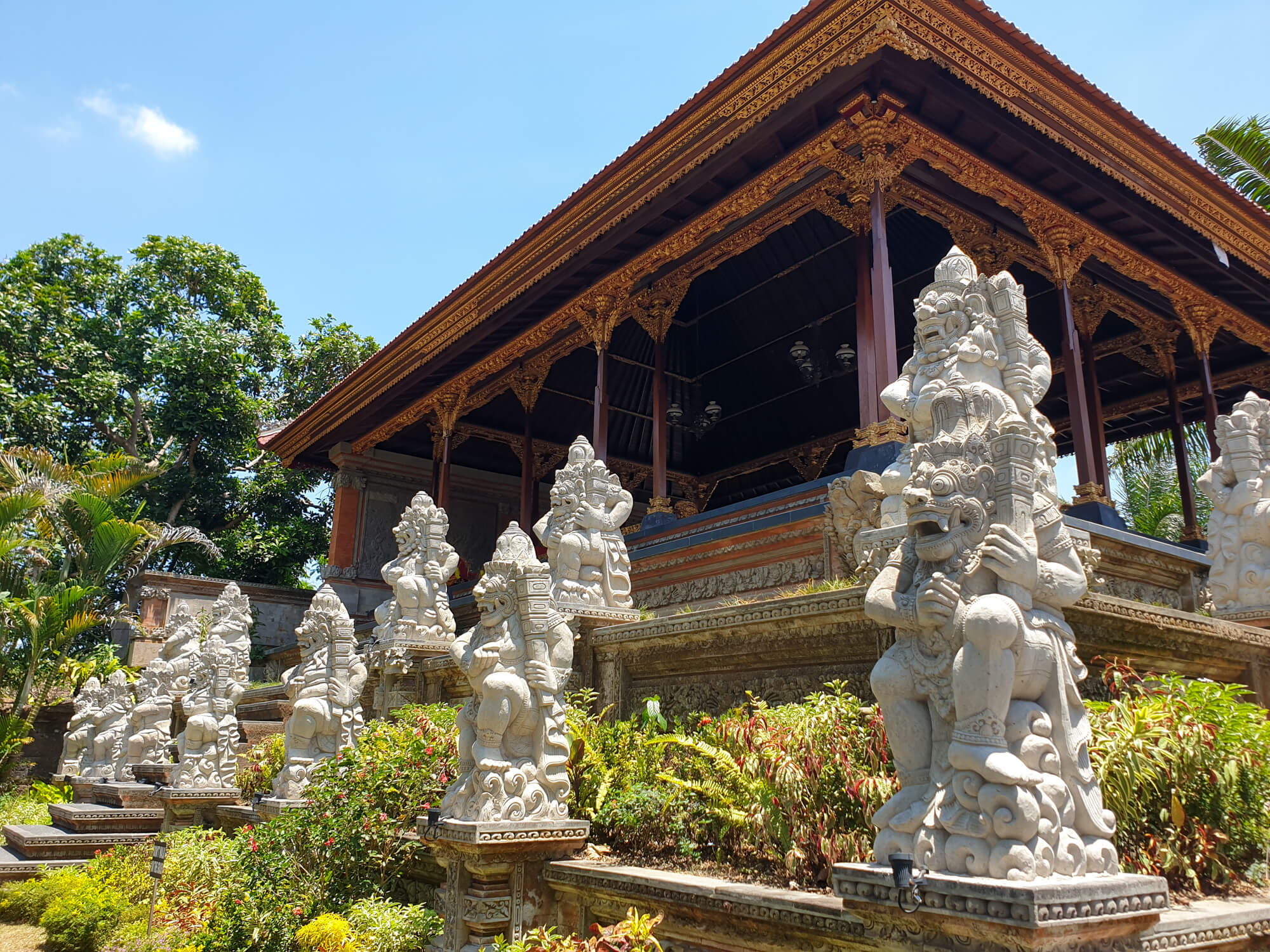
Admission is free and it only takes about 30 minutes to thoroughly comb through the grounds. Truthfully, this palace is actually best known for being one of the main sites to view traditional dance performances at night. They perform a different dance there each day of the week and if you swing by in the evening, there will be several people outside selling tickets. We didn’t get to check it out this time around, but it’s definitely on our list for next time. 
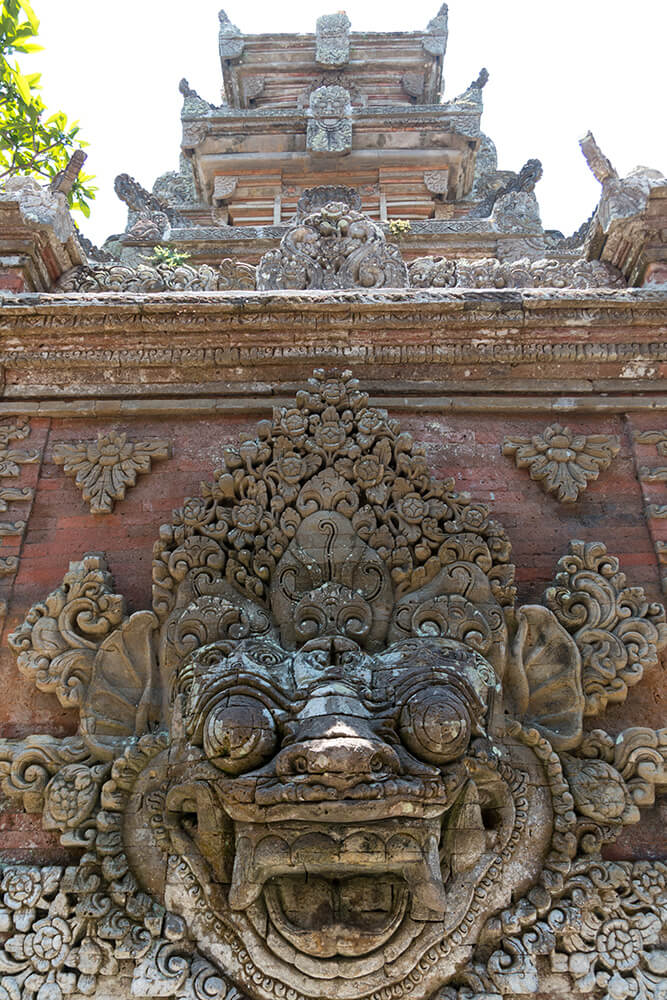

SARASWATI TEMPLE
Not too far from Ubud Palace is the Saraswati Temple. Like Ubud Palace, admission is free and only the front part of the temple is open to the public. This particular temple is dedicated to the Hindu Goddess Saraswati (goddess of knowledge and the arts) and dates back to the 1950s. As such, they hold various traditional dance and music performances here in the evenings.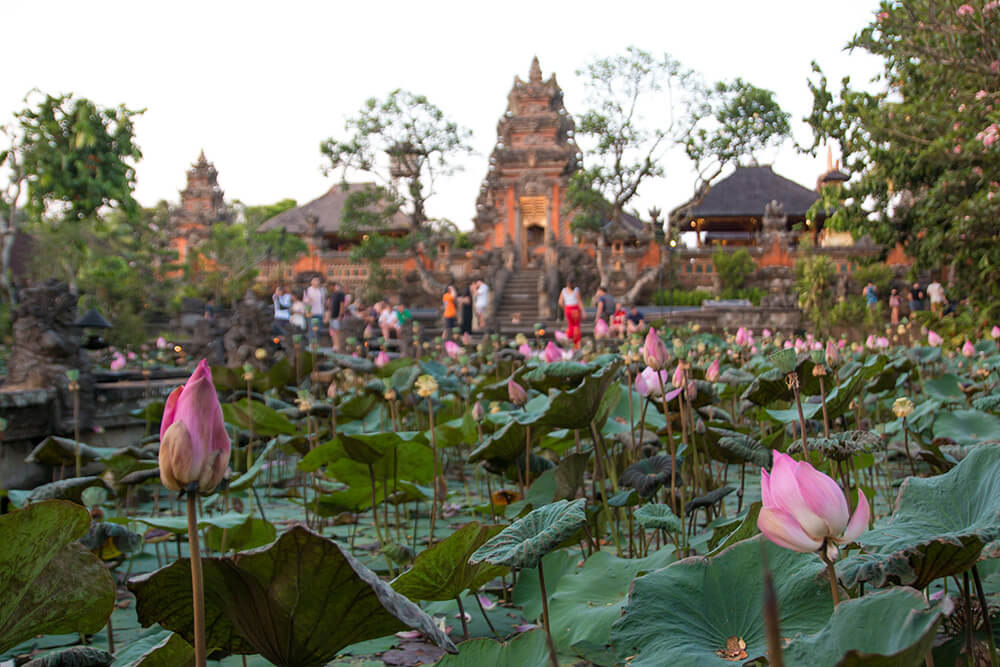

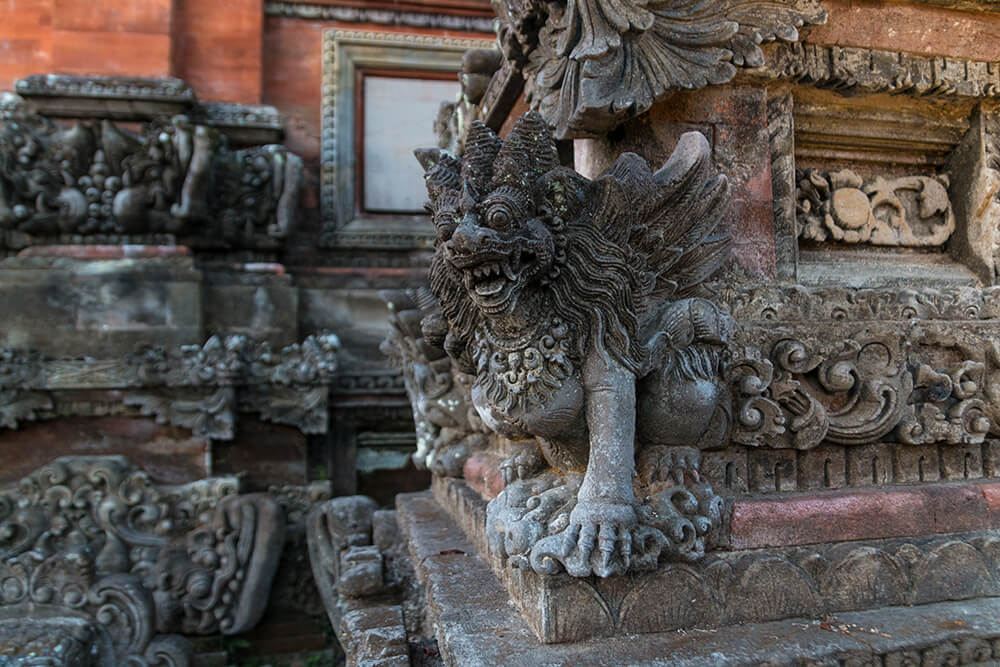
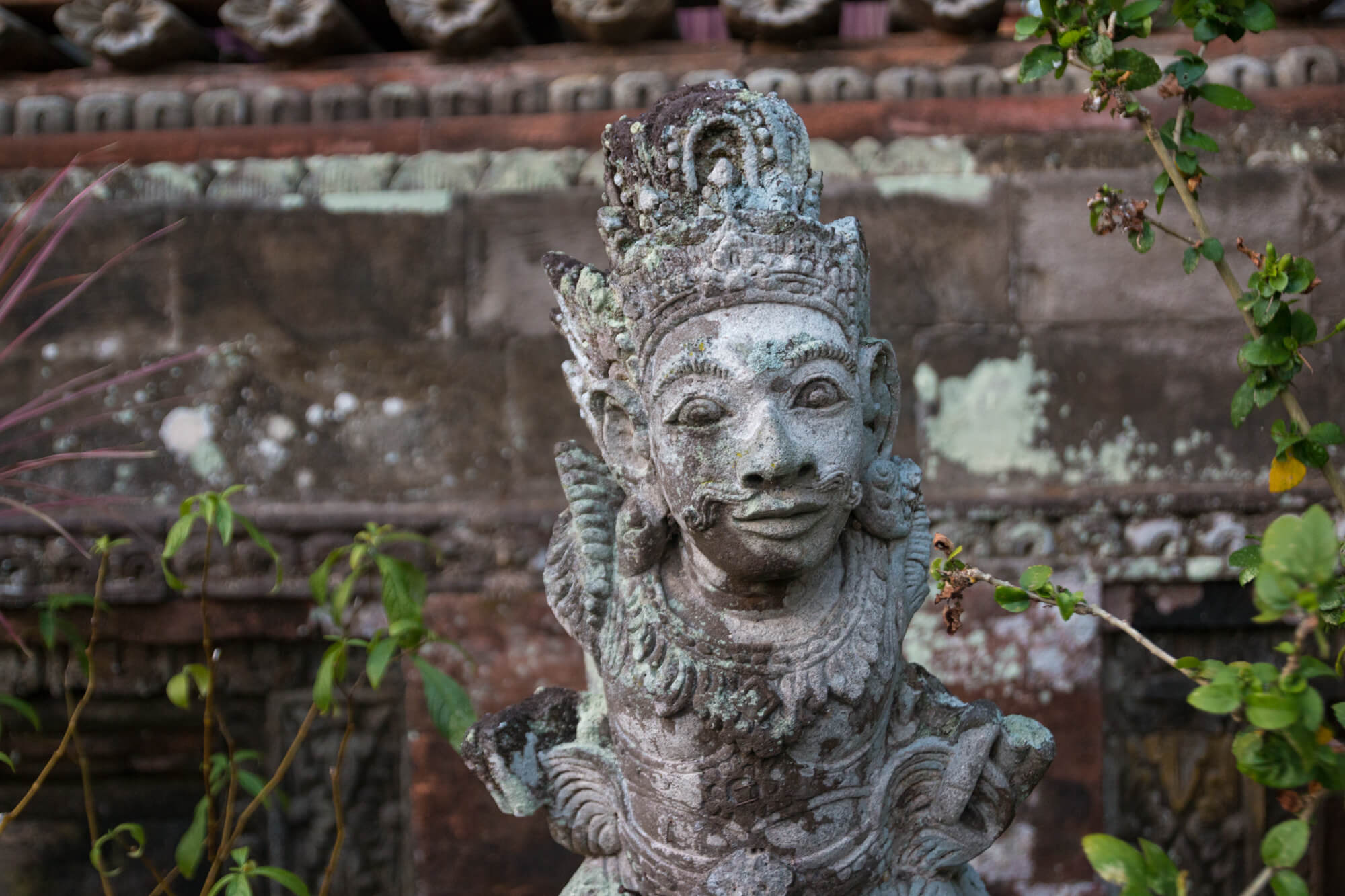
While the architecture and craftsmanship are nothing short of pristine, the real jaw dropper is the large pond in front of the temple overflowing with beautiful pink lotus blossoms. Because of these gorgeous flowers, the best time to visit is in the late morning to mid-afternoon when they are in full bloom. The flowers open in response to sunlight, so they start to close back up by late afternoon.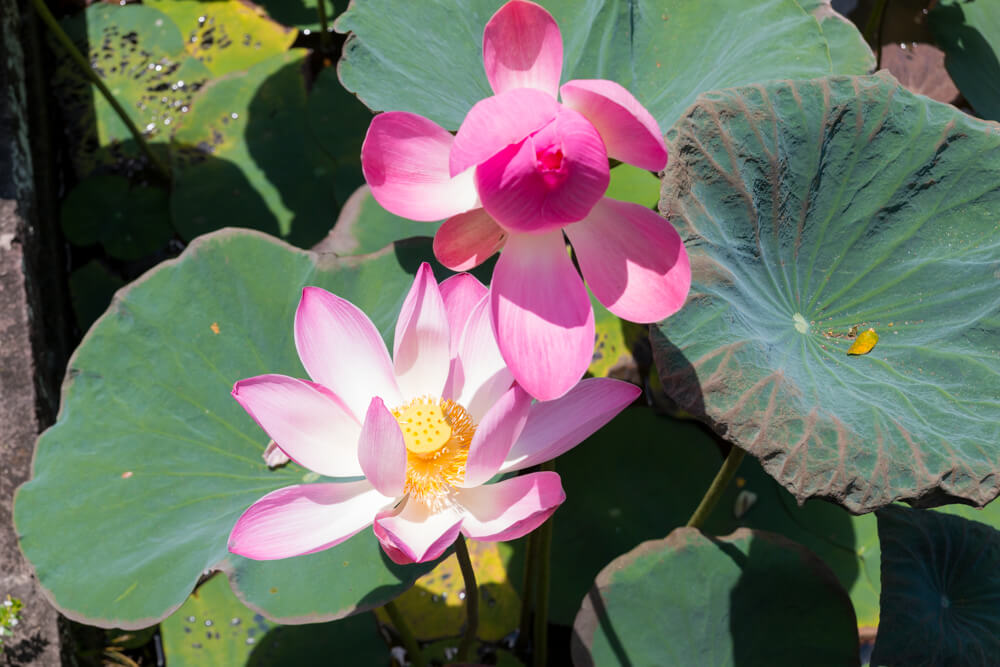
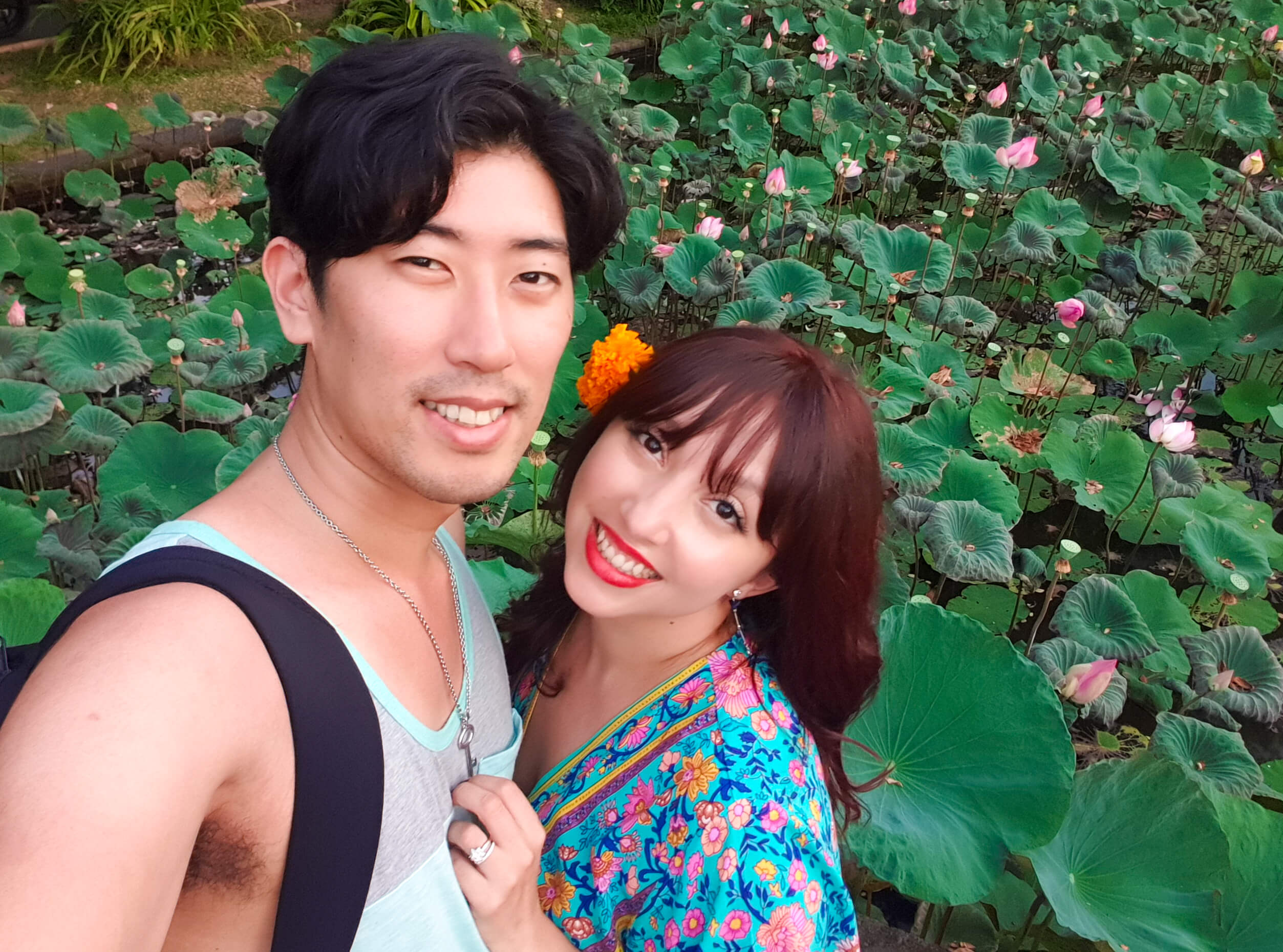

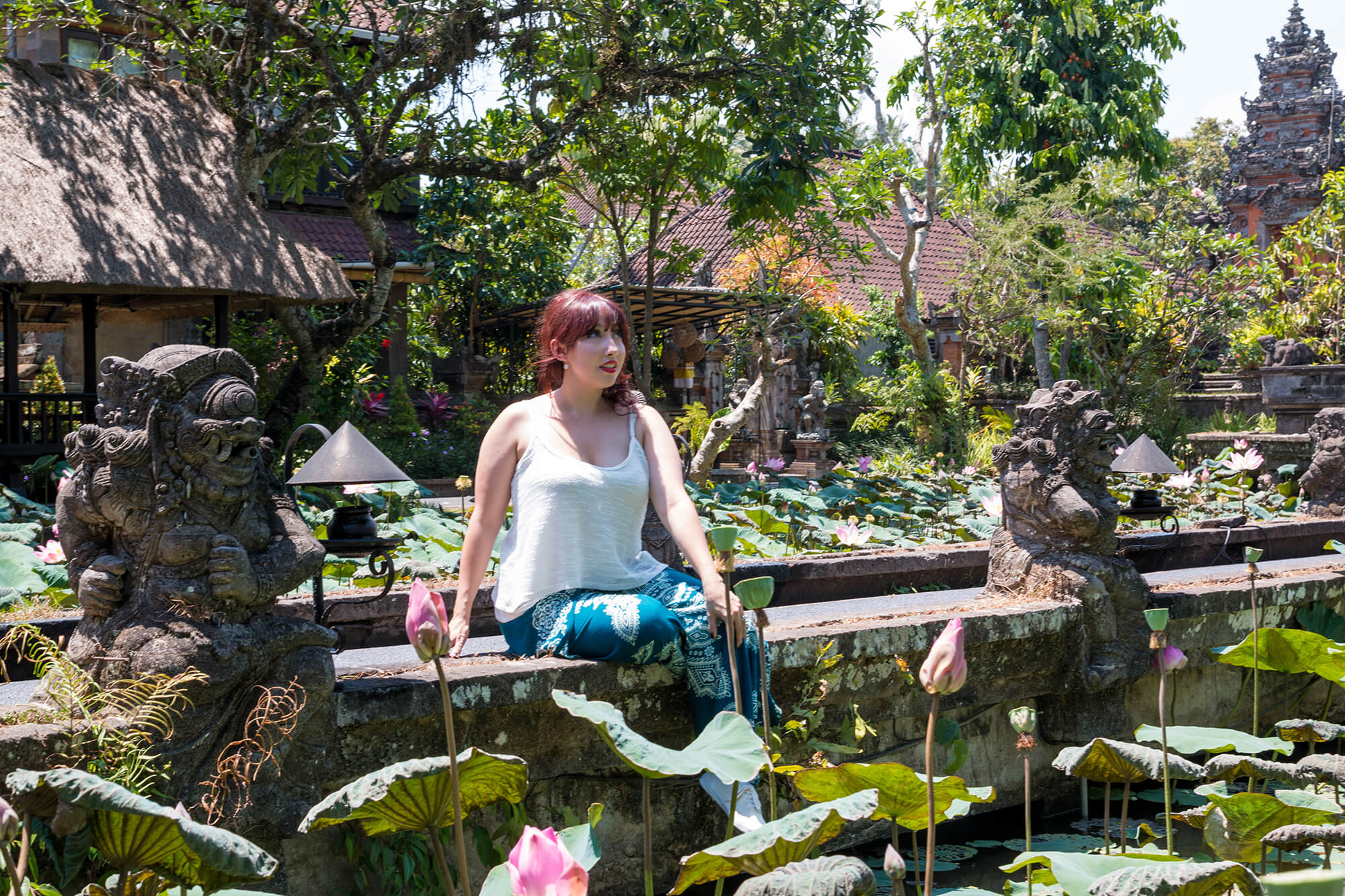
Once we were done taking a billion pictures, we got to grab some Starbucks and enjoy our coffee on their outdoor patio that overlooks the pond. Best Starbucks ever!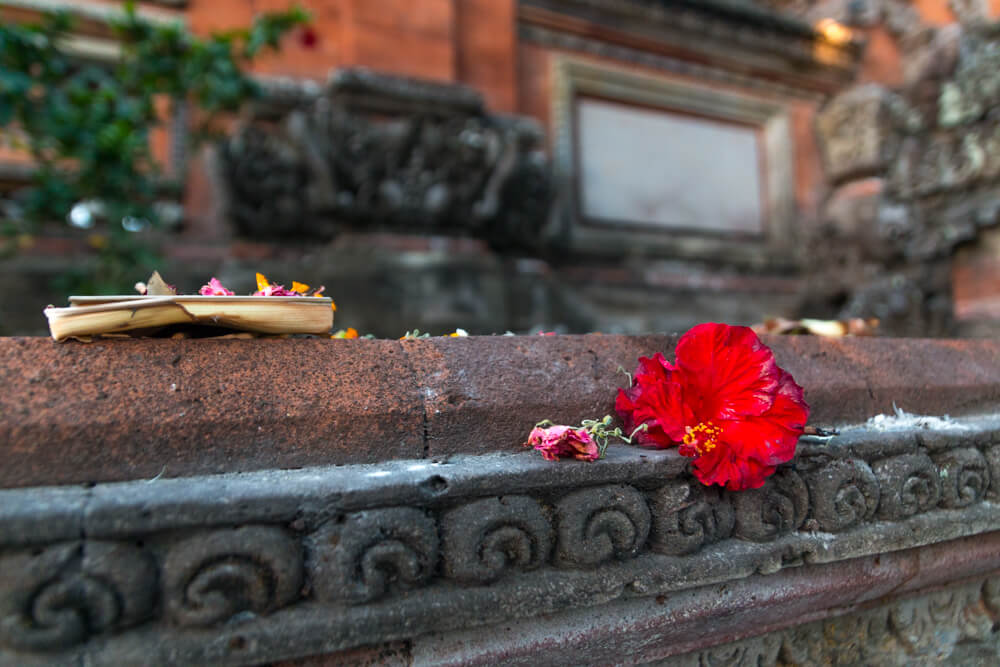



TIRTA EMPUL TEMPLE
Dating back to 960 AD, Tirta Empul Temple is one of the biggest, most popular and holiest water temples in Indonesia. The temple is dedicated to Vishnu, the Hindu God of water and people come from all over to cleanse themselves in the waters, as they are said to have curative properties. When we went, we were lucky enough to arrive on a religious holiday, though we couldn’t get anyone to explain to us exactly what the festivities were for. Nonetheless, we enjoyed the hustle and bustle of all the locals walking around in their traditional clothes and presenting their offerings. There was music and the smell of incense wafting through the air and colorful flowers everywhere we looked. It was an amazing experience.


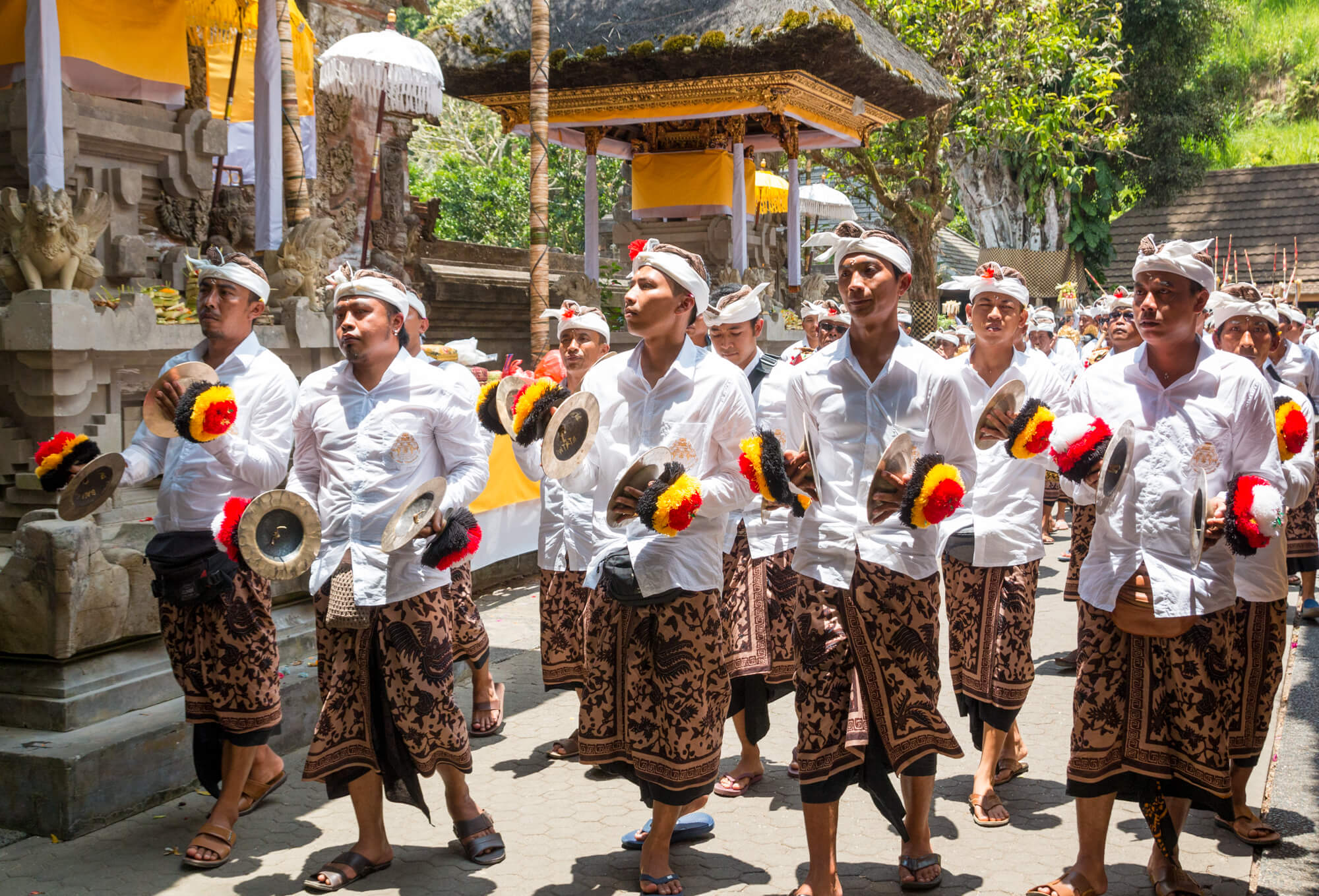
Purification is one of the most famous Hindu rituals in Bali. It is practiced as a way to cleanse the body, soul and spirit. While we did not participate in the purification process, we did enjoy simply standing off to the side and watching. Bathers stepped into a koi and petal filled pool and patiently waited to dip themselves under the first water spout. Once cleansed under the first one, they slowly made their way through all 30 spouts. Some people would stop and pray, present an offering or light incense along the way. We also saw families taking their little ones through the process. It was a really lovely and unique thing to get to see first hand.
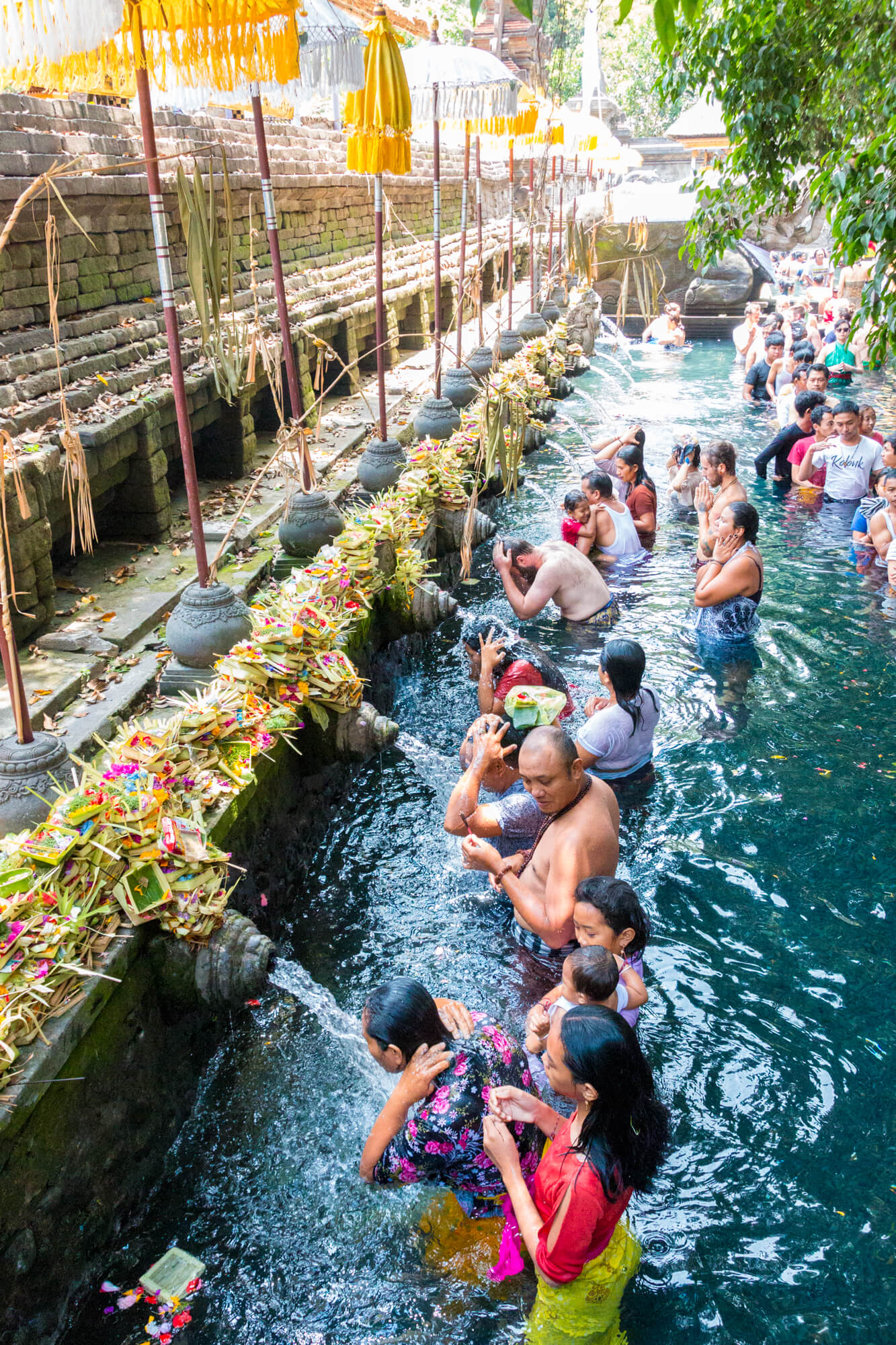
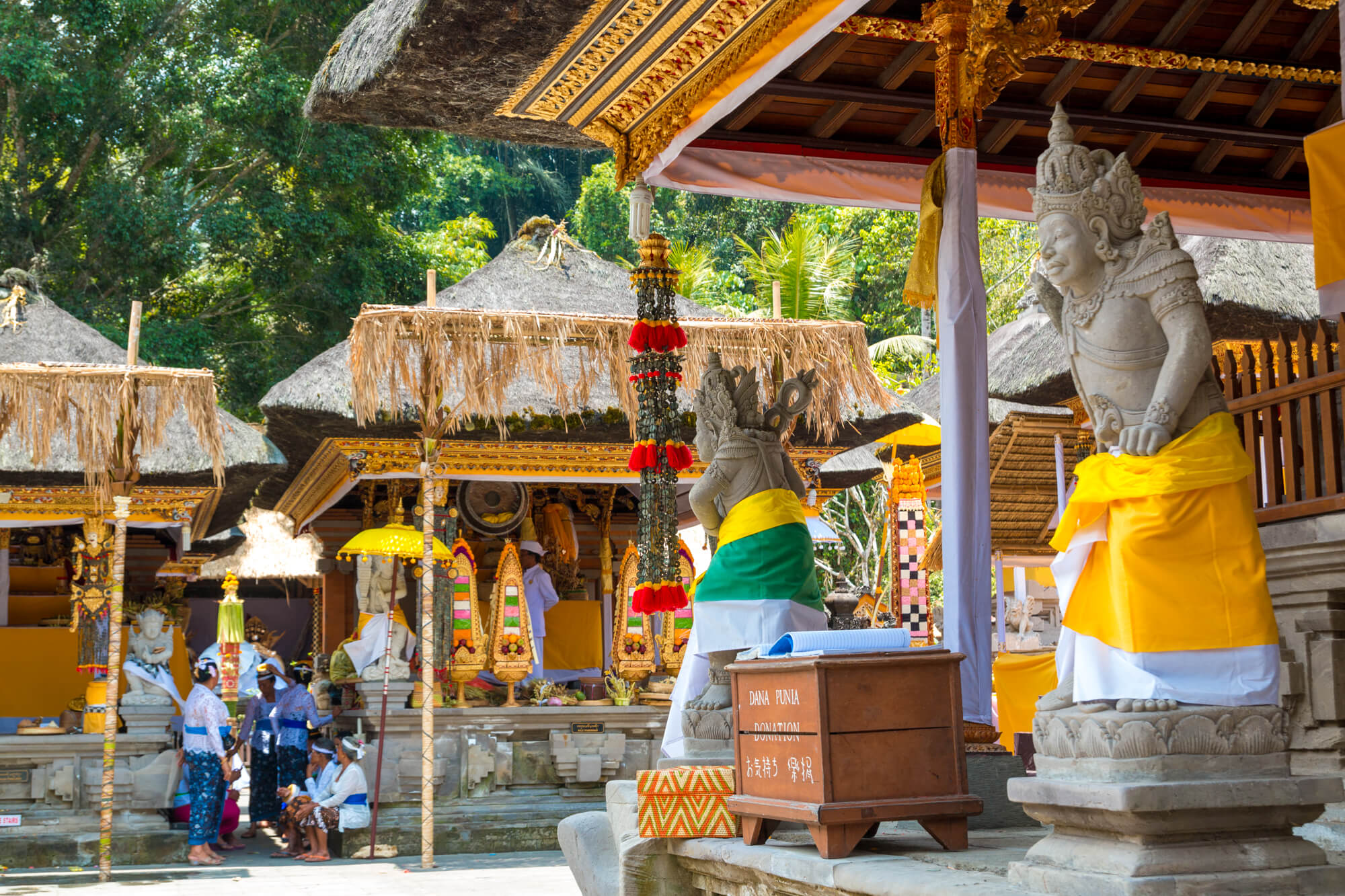
To enter the temple, you need to be buy a ticket (15,000 IDR per person) and dress fairly modestly with a sarong around your waist. You can rent one at the entrance or bring your own like we did. We found it much more convenient to just have one on hand. After that, we could explore the grounds freely. It was one of the few temples that was almost entirely open to the public and we easily spent over an hour taking it all in.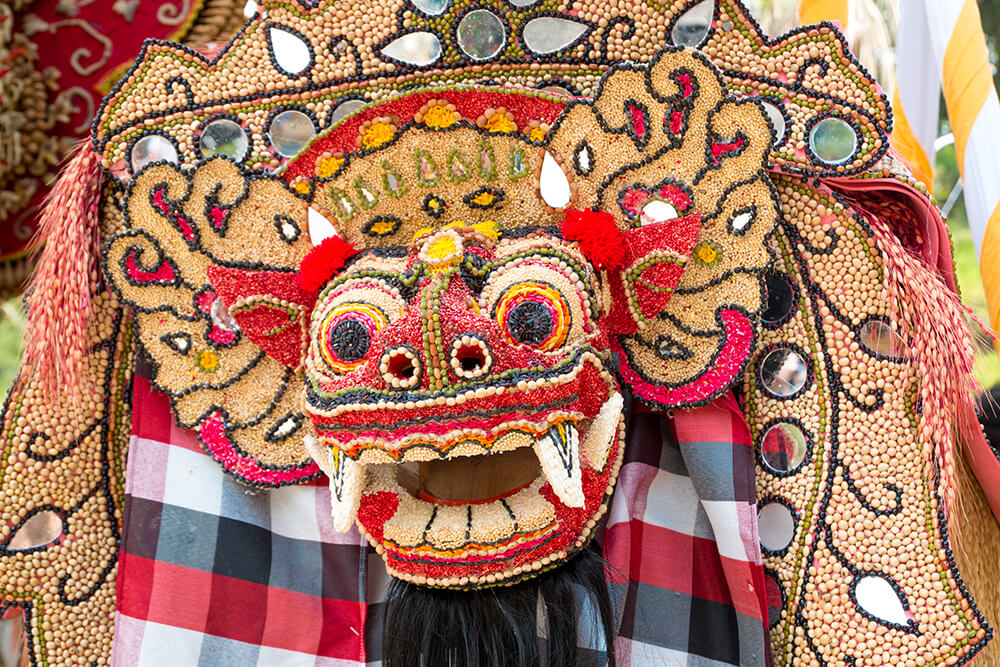
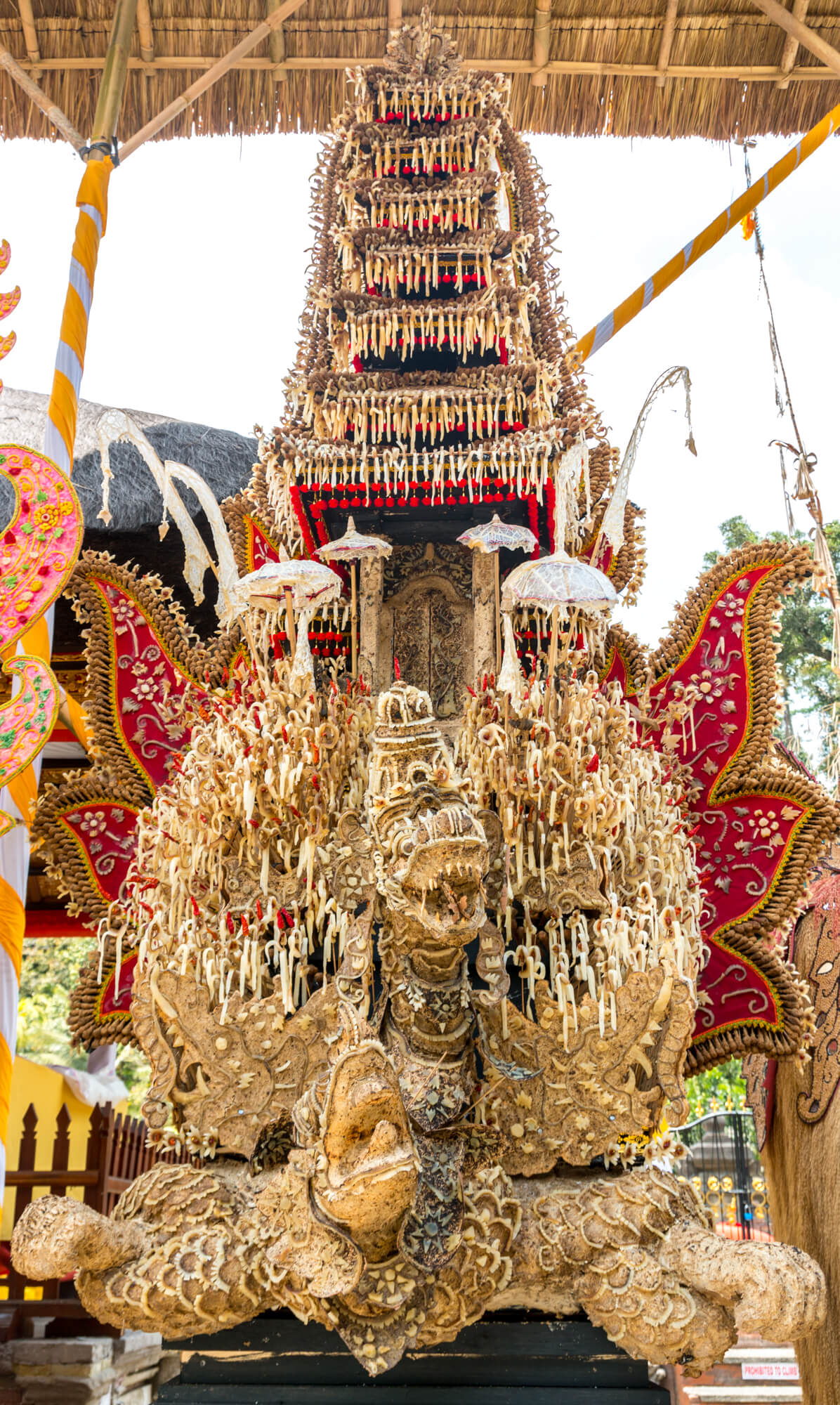
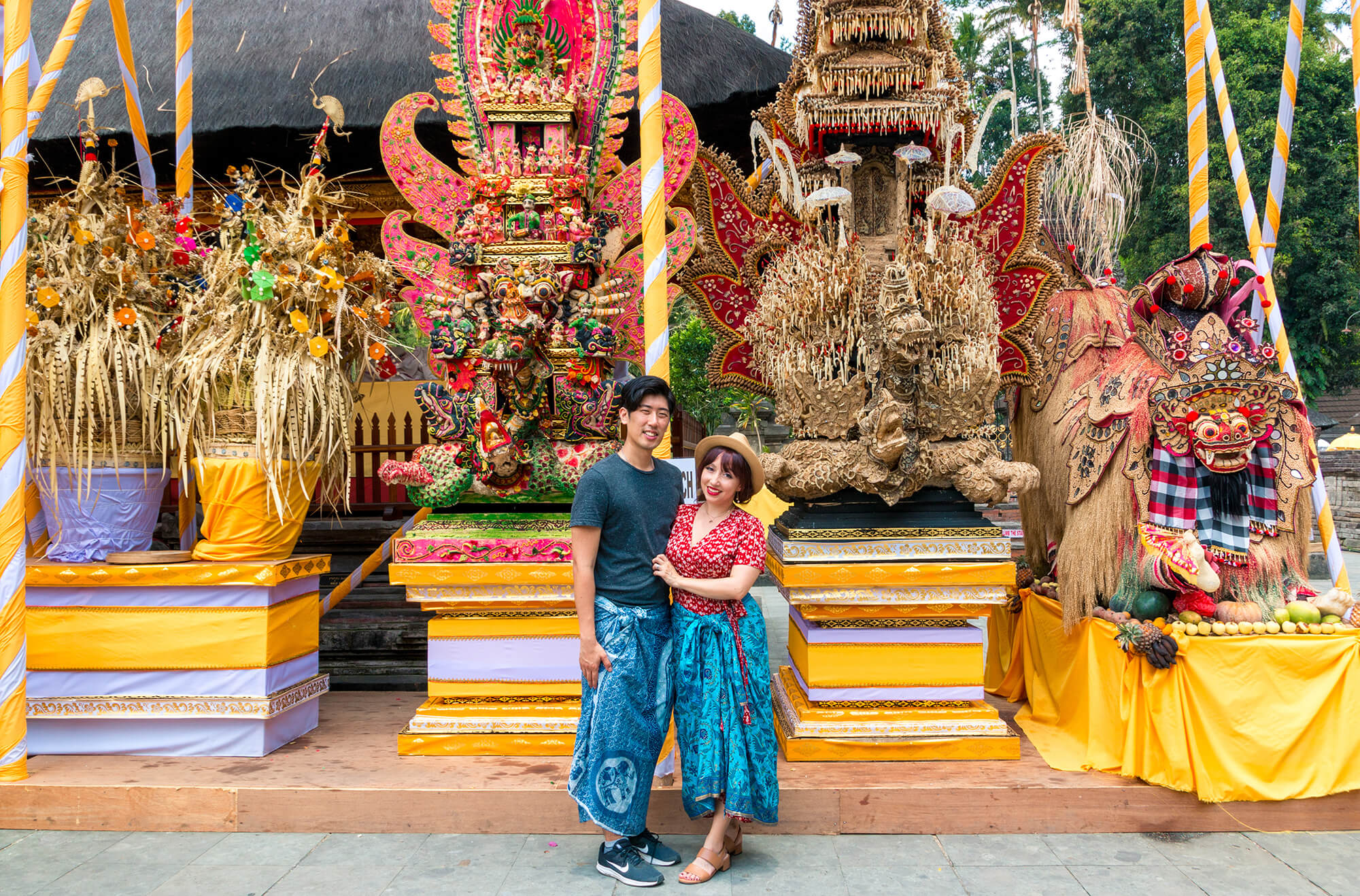
I think the only thing that surprised us were the handful of foreigners walking around in revealing clothing, bikinis or topless with swim trunks. They tended to treat the temple more like a water park than a place of worship. It was wildly inappropriate and I think some were asked to leave. I think it should go without saying, but these temples are not just tourist attractions, they hold value for the locals and they are places of worship. Please be respectful.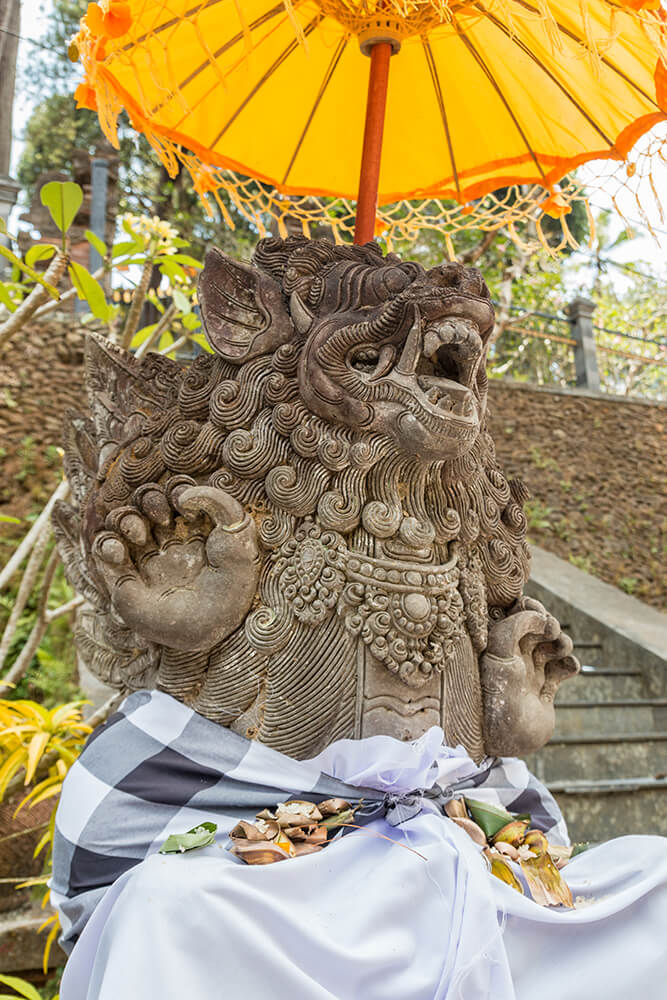
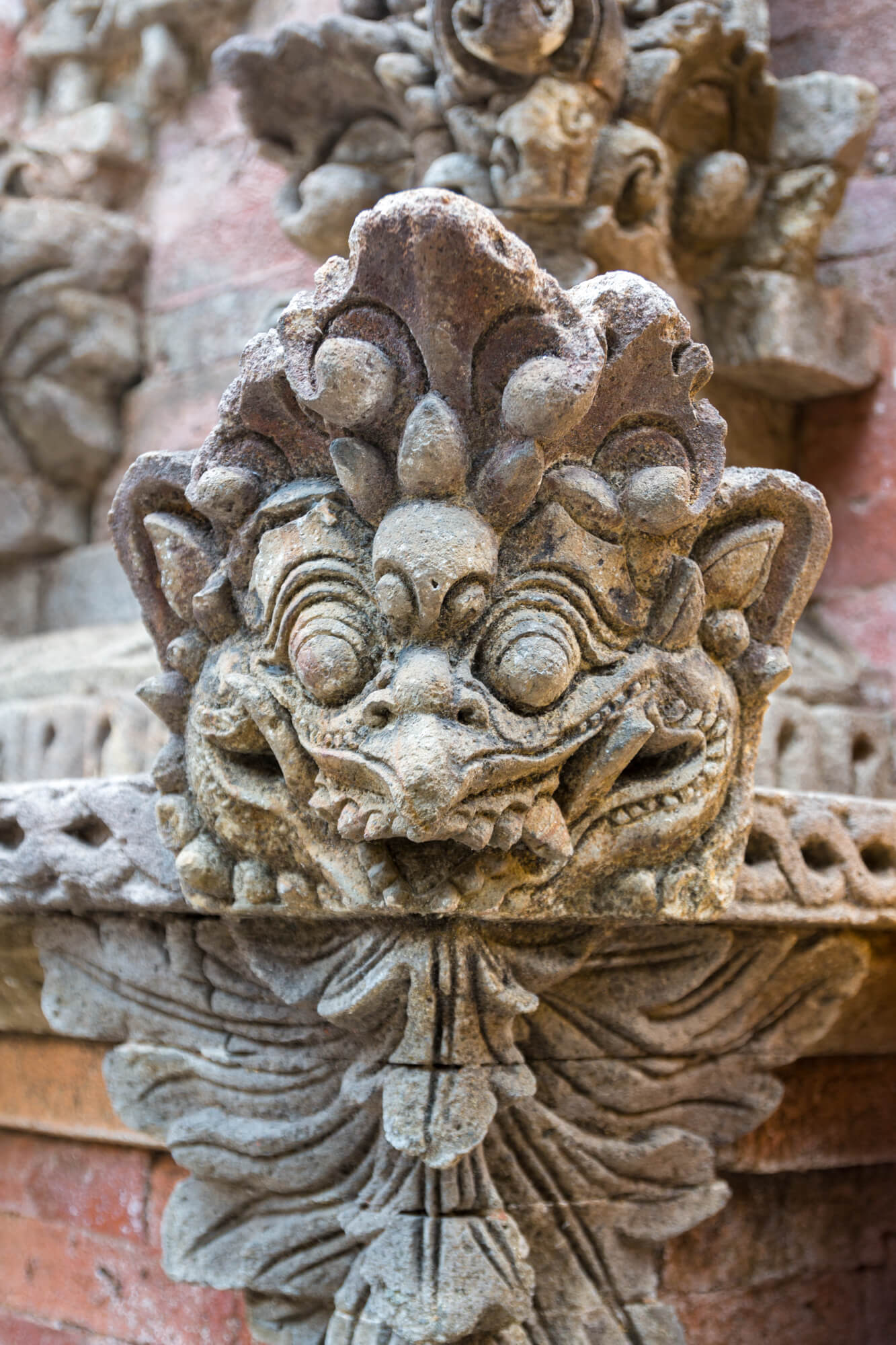

GUNUNG KAWI SEBATU TEMPLE
Gunung Kawi Sebatu is another Hindu water temple dedicated to Vishnu. It’s much smaller than Tirta Empul Temple, but probably even more impressive (IMHO). The grounds area covered in lush greenery with moss and other shrubs slowly encroaching on the shrines and statues. When we went, it was almost completely empty. It was quiet and peaceful, but still so full of life. Small swallows chipped around the pools of waters, butterflies fluttered around the bushes and we even saw a few ducks running through the grass. It was textbook “picture perfect.”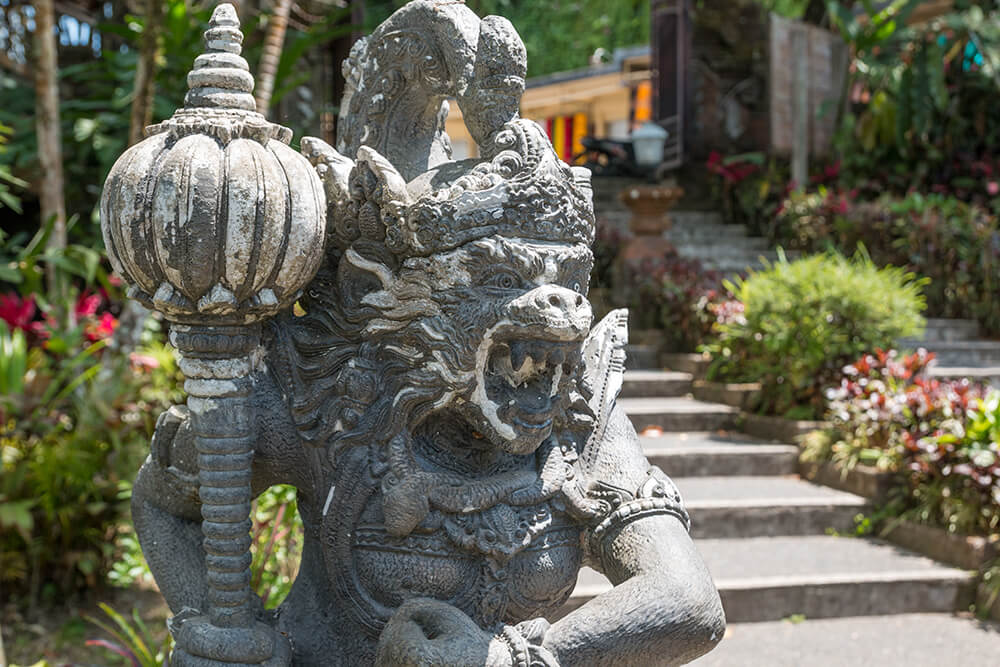

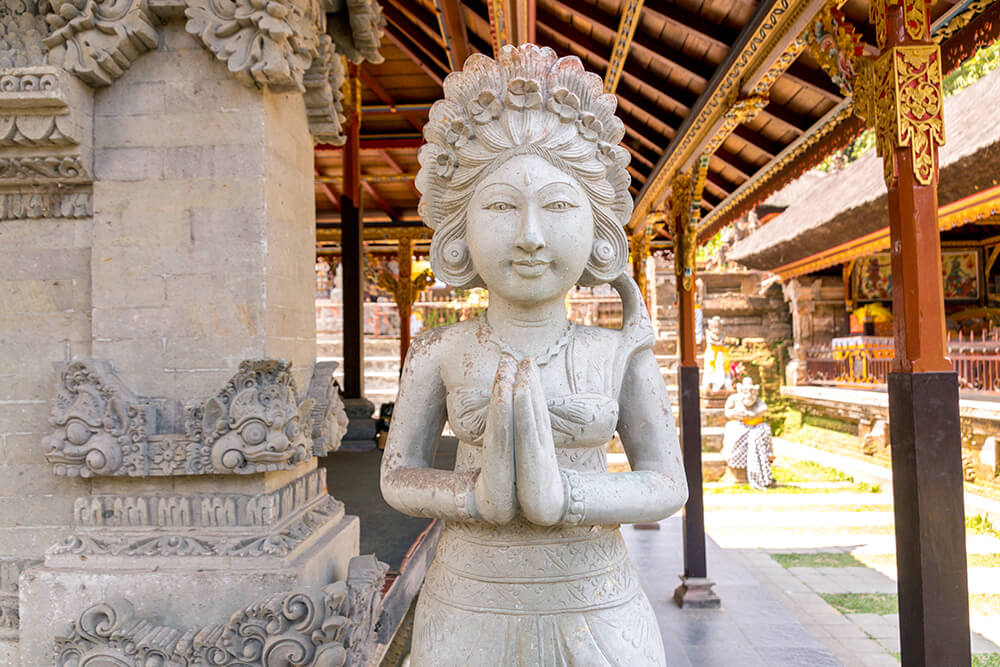
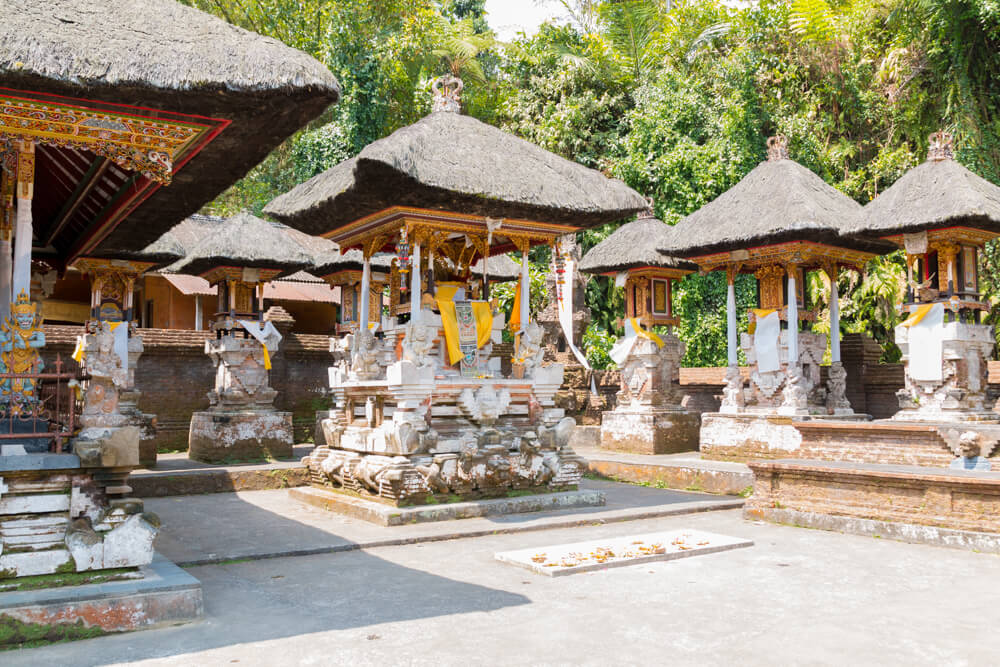
Like Tirta Empul Temple, there are also koi filled bathing pools here for purification if you’d rather a quieter more private experience. Wondering around the grounds, I came across a unique cluster of shrines. According to a Spanish tour guide I was eavesdropping on, each shrine belongs to a unique diety representing a particular field or career. Locals come and leave offerings in front of a certain shrine to pray for success in their respective fields. I thought this was really interesting, since I hadn’t come across anything like it at any of the other temples.

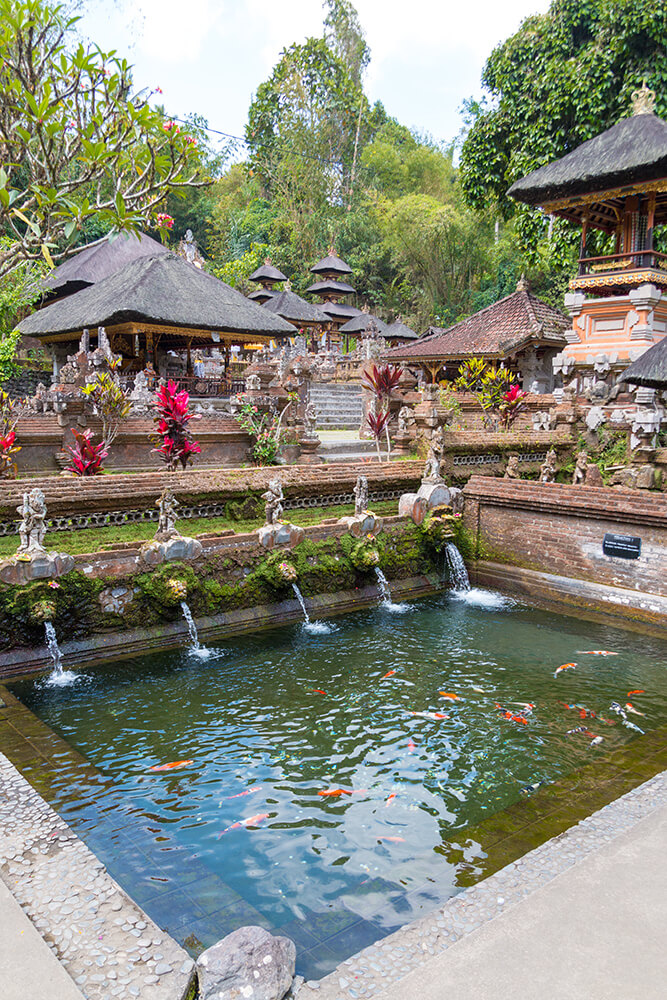
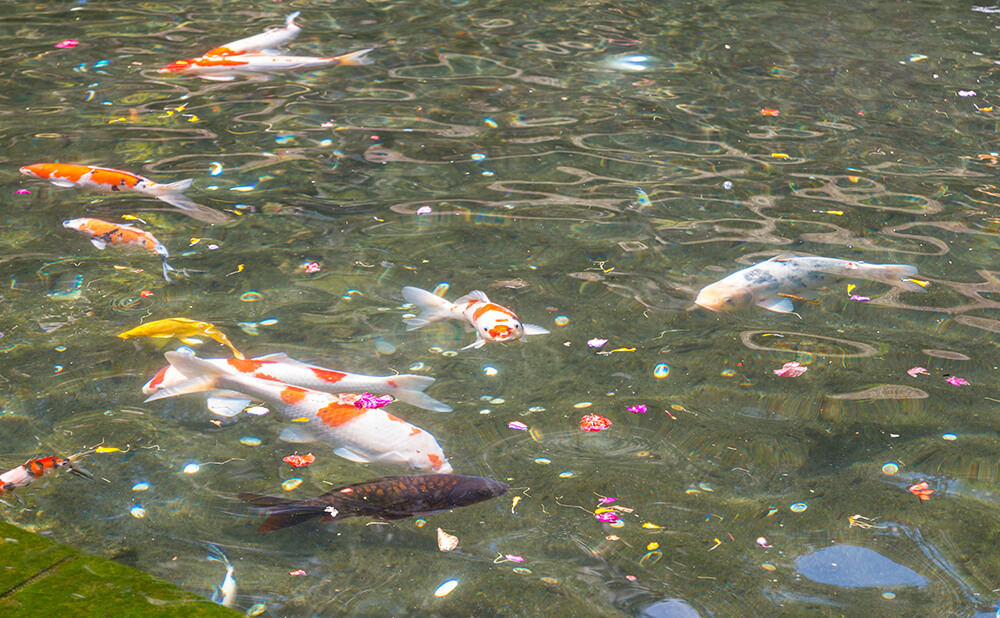
Tickets here will run you 30,000 IDR per person plus extra if you need to rent a sarong. I really can’t stress how much easier and cheaper it is just to buy one at the Ubud Art Market and take it around with you. We came across this temple by accident as we were trying to reach Gunung Kawi Temple. Similar names, completely different places. Even Google mixes up the pictures, so be very certain of where exactly you want to go before heading out. Or just go to both if you’re feeling ambitious.


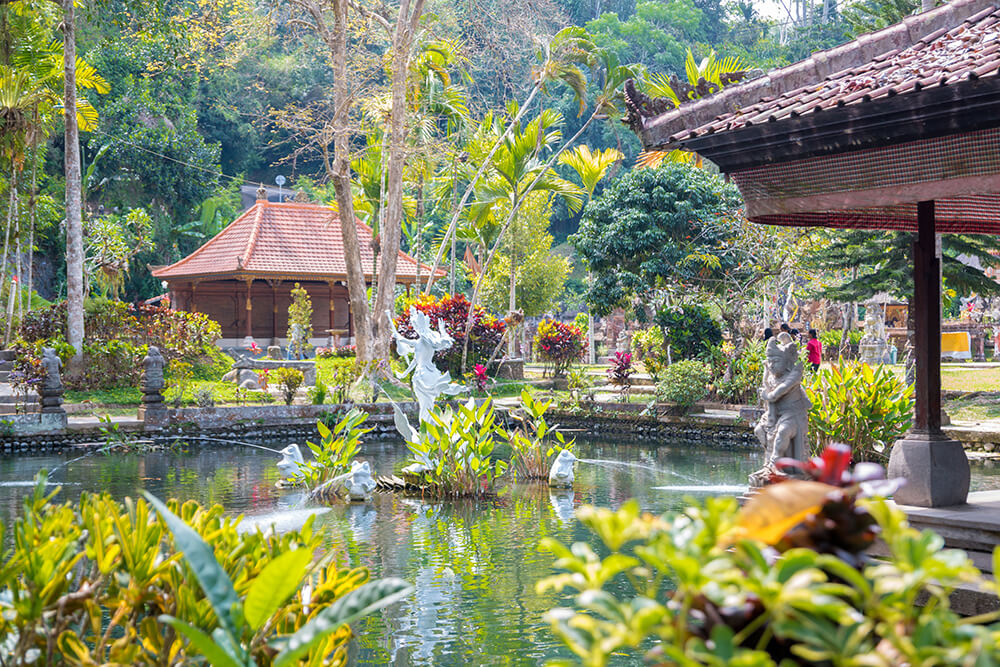
NUSA LEMBONGAN
For the last leg of our trip, we decided to venture out to Nusa Lembongan for a little R&R on the beach. I’m not going to lie, all we did way lounge around, eat and drink cocktails. My husband and I tend to work more then we should, and we have a hard time unplugging when we’re on vacation. We had no trouble doing that here. Surrounded by white sand, crystal blue waters and hardly any people it was a true paradise. The only real problem we ran into were the chunks of thick coral on the beach we were staying at. Swimming at this beach was definitely not an option, but luckily our hotel had two pools right on the beach so we could still enjoy the beach while we were swimming.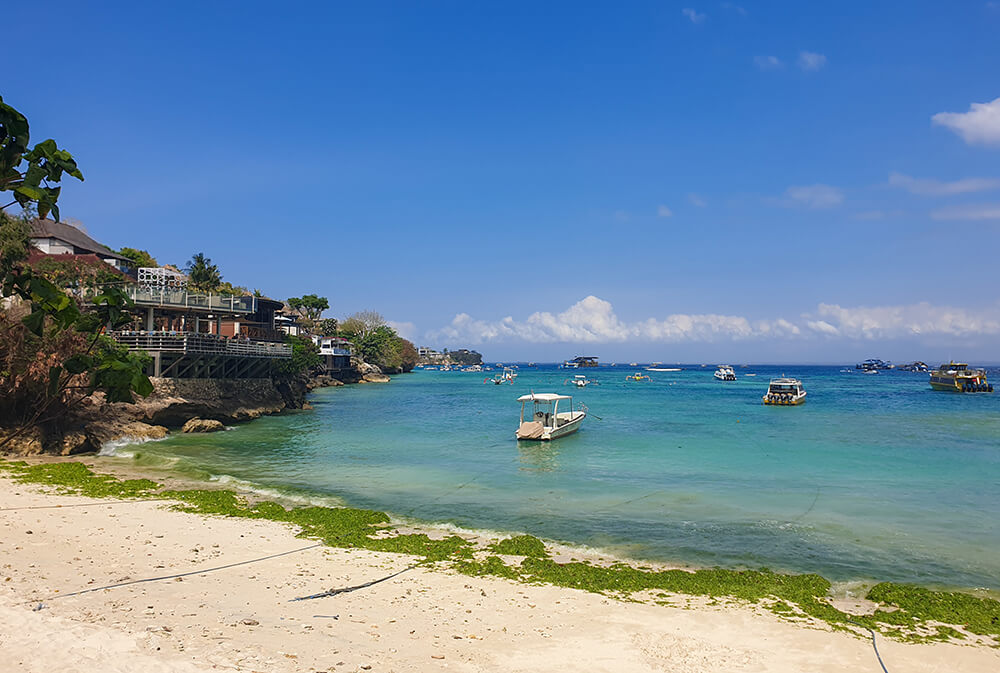
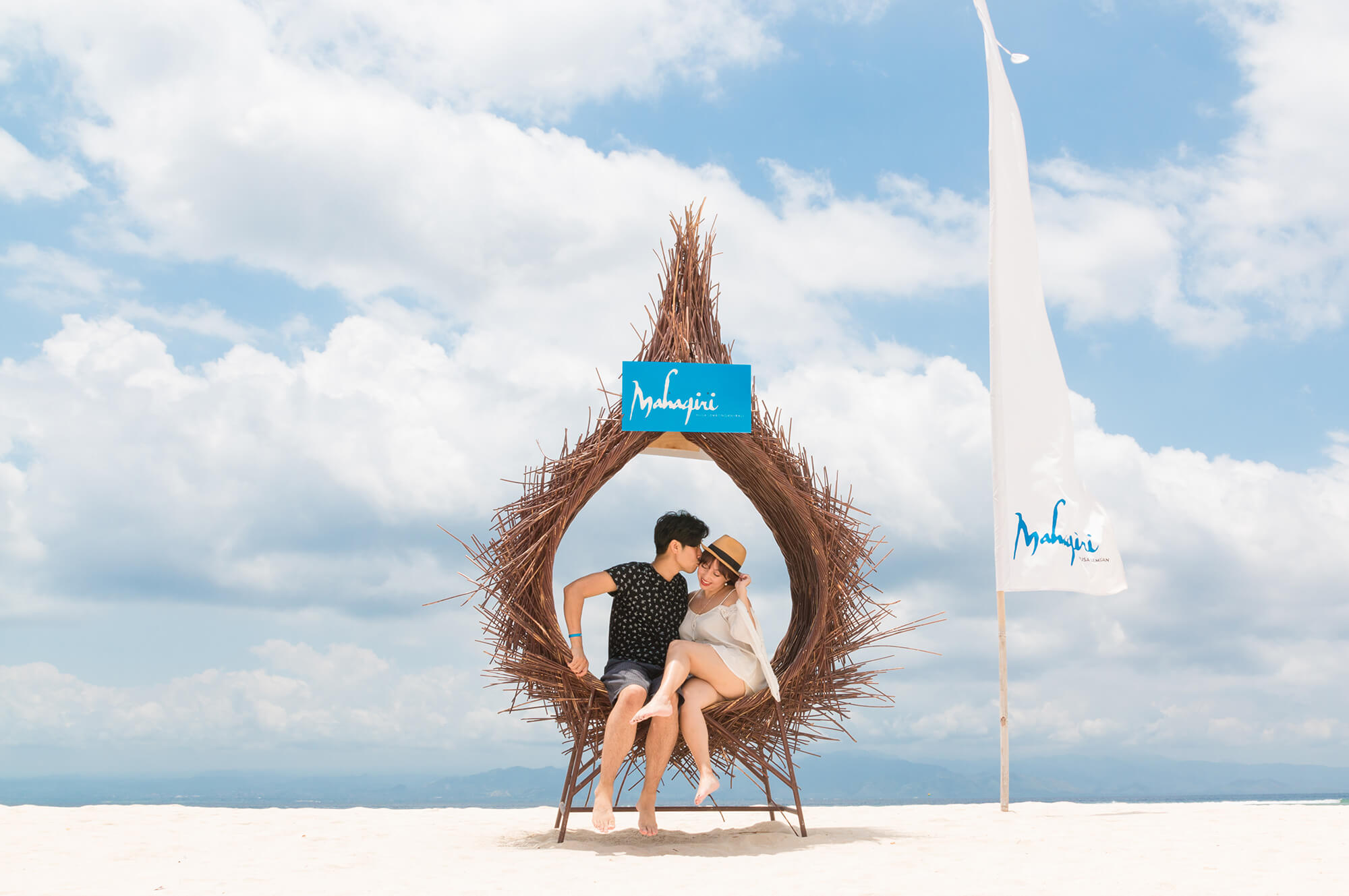
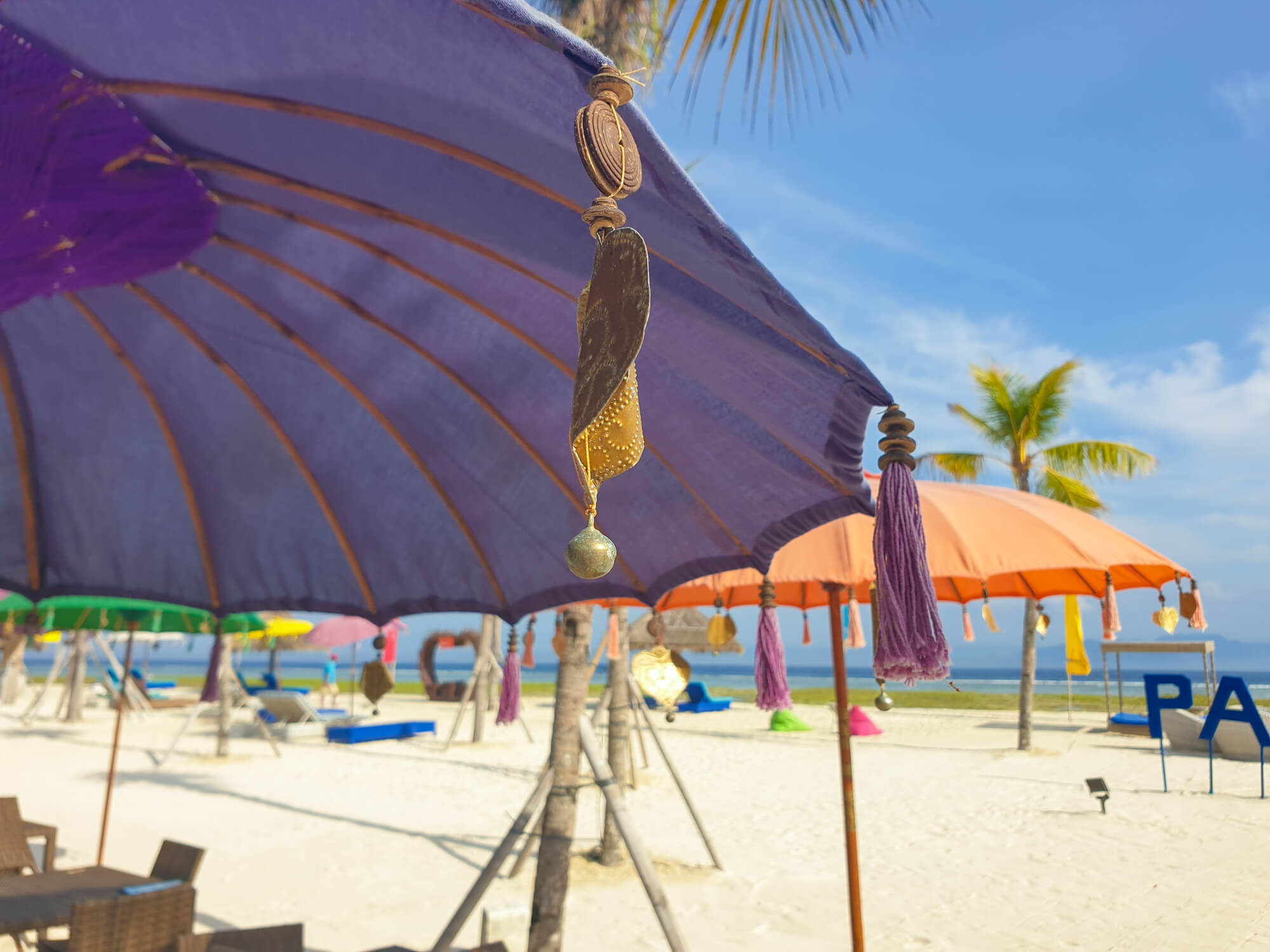


Nusa Lembongan is a pretty big island, so there are a couple of different beaches to choose from depending on what you’re looking for. Our beach was perfect for doing absolutely nothing! Adorable dogs ran along the beaches or curled up with tourists. The shore was lined with little cafes and restaurants with beach chairs, umbrellas and bean bag chairs to lounge on. We even found a spot that had a mini golf course. We had planned on snorkeling, but since my hubby was still recovering from the notorious “Bali Belly,” we decided to skip it this time.
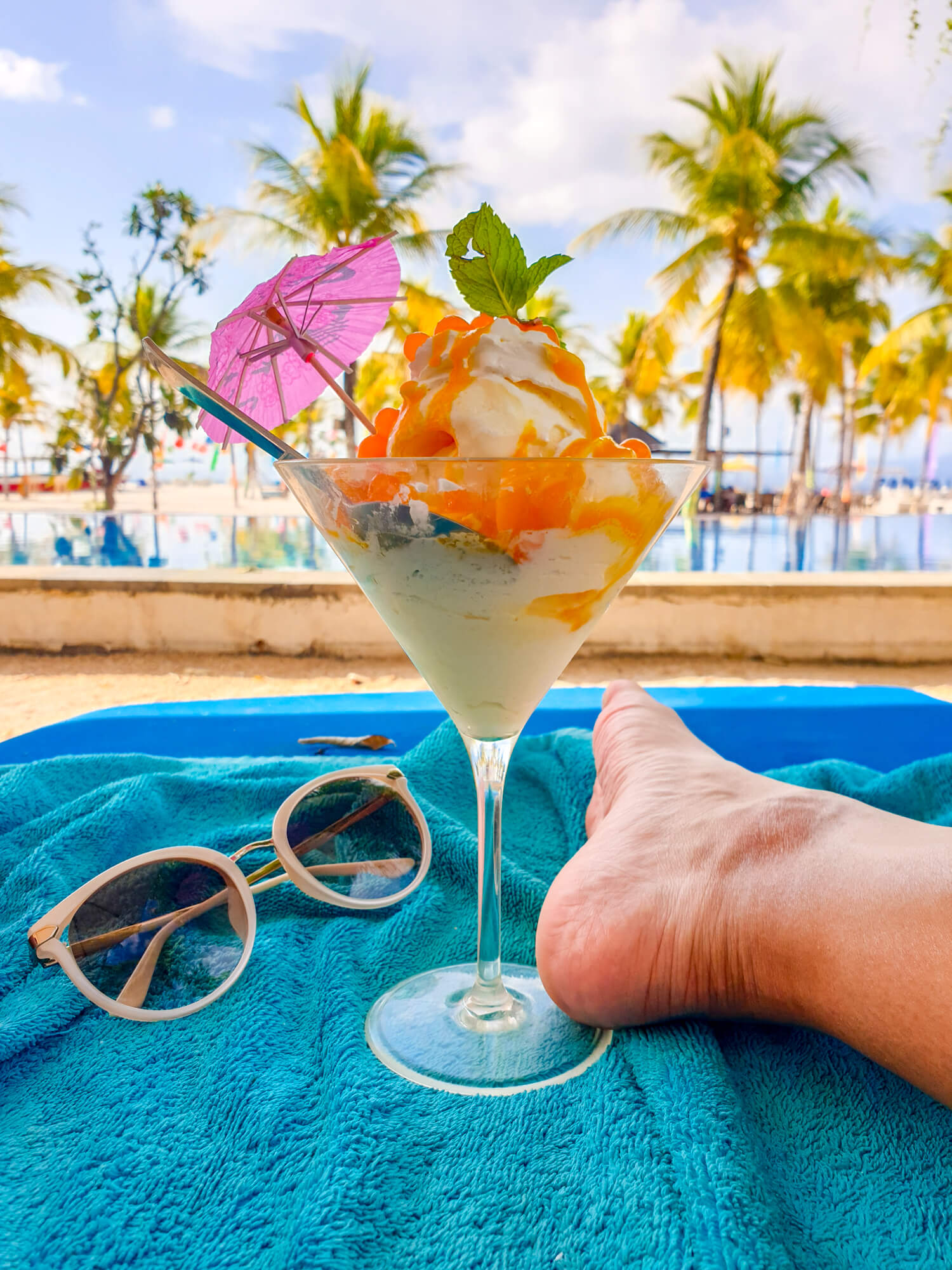


In the evenings, local bands play at cafes and restaurants all over the island. Luckily we had one playing right at our hotel and got to enjoy some fantastic music with our dinner right on the beach. They even played our wedding song for us, “Say You Won’t Let Go” by James Arthur. It was the perfect ending to a great trip.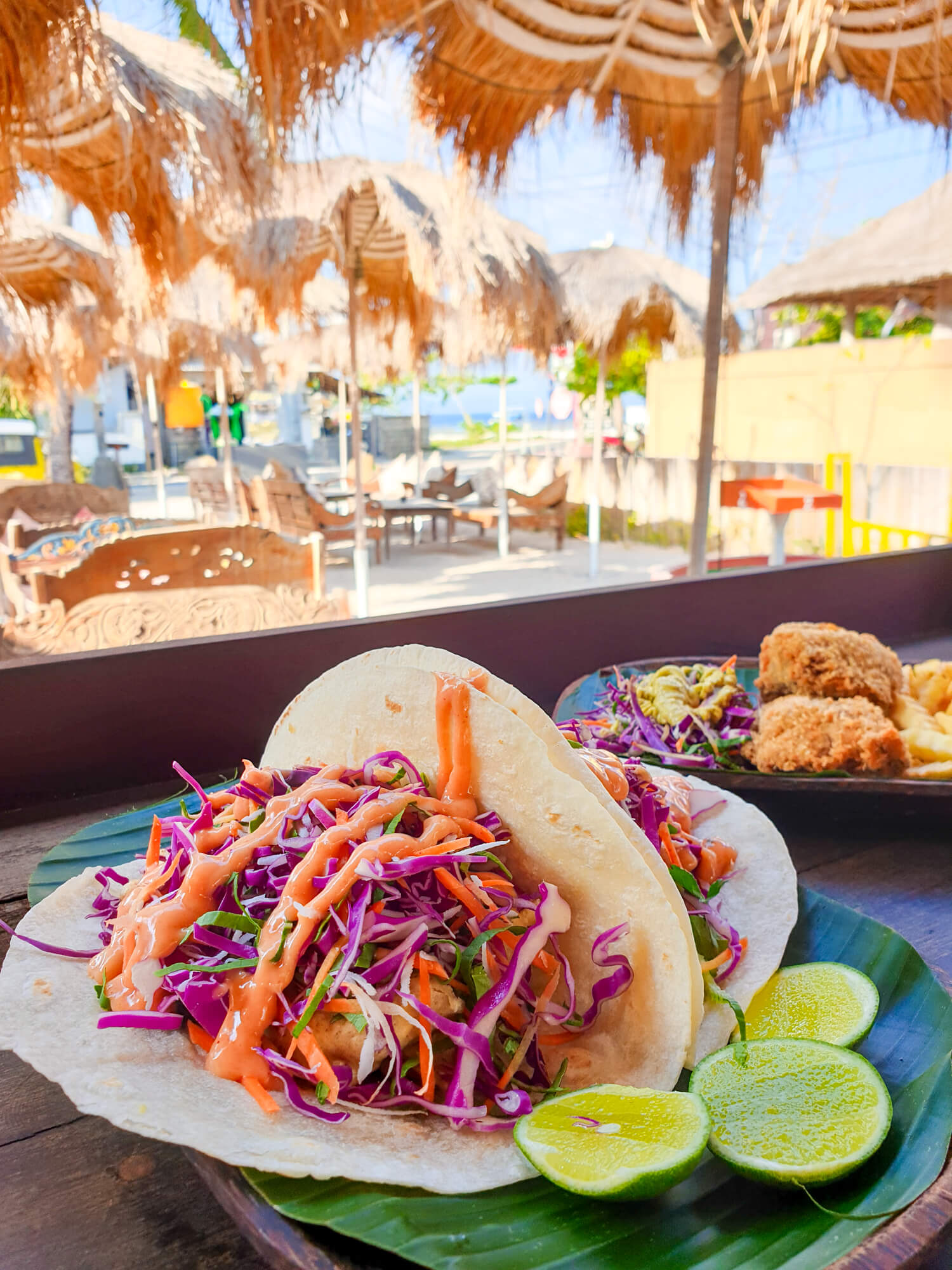
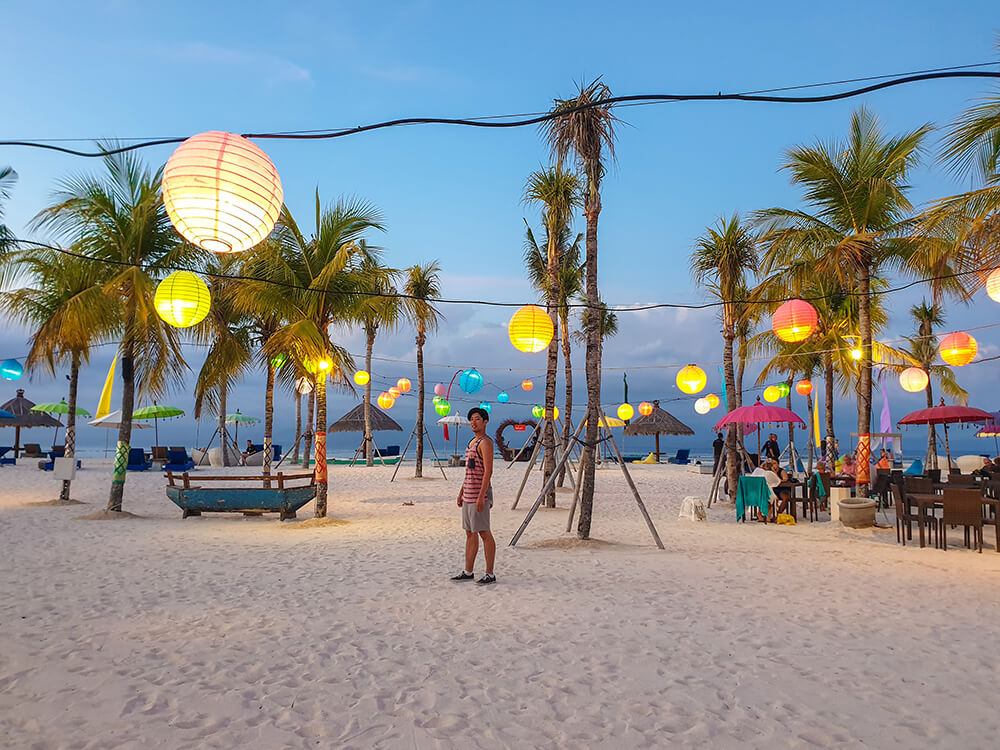


***BONUS: TRANSPORTATION***
Getting around in Bali was a little trickier than we expected. While there are various ways to get from point A to B, we found these 3 to be the easiest and most accessible.
- Motorcycle & Scooter Rentals
According to one of our private drivers, the scooter is the ideal way to get around in Bali… if you’re a local. Then he went on to explain that while the accident rates are quite low, most of the ones that do occur almost always involve tourists. Driving around, it wasn’t hard to see why. The locals definitely have their own way of driving and without a speed limit or many stop lights to guide visiting motorists, it can get a bit dicey.
If you’re experienced with a motorcycle or scooter, then this route is going to be the cheapest and most efficient way to get around the island. It’s a great way to move at your own pace and explore all the cool little towns and shops you wouldn’t have come across otherwise. Rentals range anywhere from 30,000-50,000 IDR per day (not including gas). While many tourists tend to drive without an international driver’s license, I have heard that the police constantly pull tourists over to check and then demand payment as a “fine.” So, save yourself some unnecessary trouble and make sure to carry a proper ID on you while driving.
- Taxi & Grab
Since scooters were off the table for us (having zero experience riding one), we turned to our most familiar mode of transportation, the taxi. This was super helpful when we needed to drive around Ubud. Unfortunately, like anywhere else, there is always the chance of coming across dishonest drivers that will either claim the meter is broken or take the longest route possible. The best way to combat this is to make sure the meter is running as soon as the car starts to move and use google maps to follow the driver to your destination. Taxi fares start with a base rate of 7,000 IDR and charge 6,500 IDR per KM.
Taxis are a bit harder to get for long distance traveling, so we found Grab to be a real life saver in this instance. Grab is pretty much the Southeast Asian equivalent of Uber. Unfortunately there’s a lot of controversy regarding these ride sharing services, so many areas sympathetic to taxi drivers ban the entry of any summoned rides. We saw A LOT of these “NO GRAB” signs in central Ubud.
However, as travelers on a budget, this service was way more convenient and affordable. The fares can be up to 50% cheaper than a taxis’, plus the app offers driver tracking, an estimated total and the option to pay through the app. You can also pay cash, but just make sure to have exact change or give a bit extra as tip. We always tipped a bit because the service was always great! We were even able to negotiate a fixed rate with one of our drivers and he drove us around for half a day, which was WAY cheaper than renting a private driver.
Which brings me to the the last mode of transportation…
- Private Driver Rental
While renting a private driver is not nearly as expensive as it sounds, it is the most expensive option of the three. Typically you can rent one for a full or half day. There are all sorts of sites that offer these services (usually attached to tour packages), but we decided to rent one through our hotel. We got 8 hours of service for 700,000 IDR. We only used it on our first day and made sure to have have our itinerary thoroughly planned out for that day.
Our driver was really pleasant and was a bundle of Bali knowledge. Since we didn’t rent any tour guides, he really helped us learn a lot about the island, culture and even gave us some background on the places he took us. He basically gave us as much or as little conversation as we wanted. He was very good at reading the room. So really, no complaints here.
FINAL THOUGHTS
Overall it was an amazing trip, flaws and all. There really is so much to see and experience in Bali and this is just the tip of the iceberg. Hopefully we’ll be able to rent a scooter next time and discover some new hidden gems. But for now, stay tuned for my next post, where I get into some of my favorite Bali food spots!
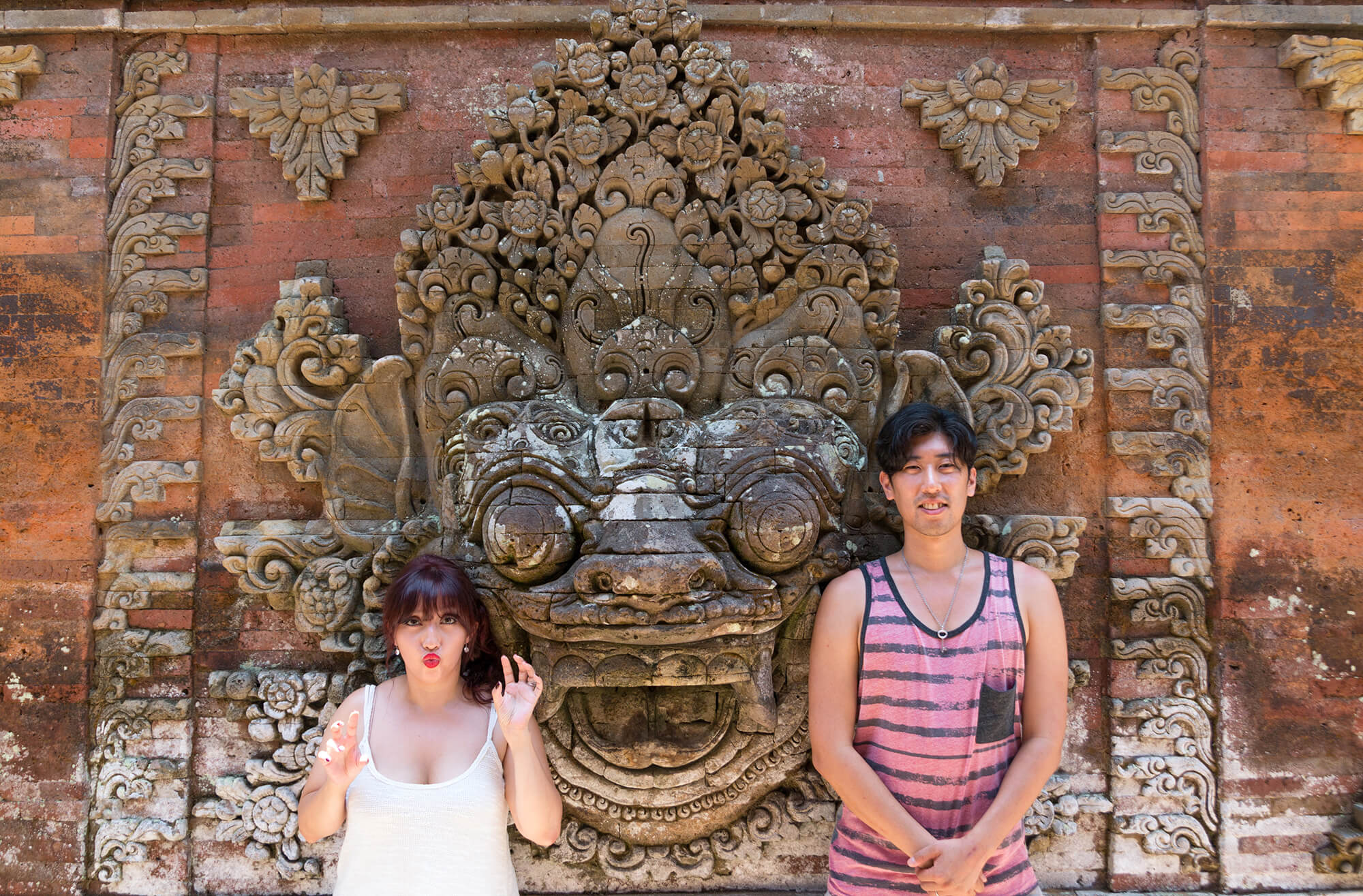
Pingback: ULTIMATE BALI GUIDE: Where To Stay + Bali Belly Tips | Seoul Searching